I arrived in Ouarzazate in the evening, after nightfall. I went to the hotel I had chosen, took a shower and once again became aware of how tired I felt. But since it was just a little past 7 PM, I decided to eat something first, so I had some soup and a sandwich at the hotel.
Luckily, after dinner, I decided to take a short walk. That’s how I came across the Kasbah Taourirt, which, according to oral tradition, was built in the 17th century, but saw significant development in the 19th century. In the first part of the 20th century, the kasbah began to deteriorate, but during the last couple of decades of the 20th century and later as well, it was restored and turned into a tourist attraction.
Since Ouarzazate and its surroundings are a very interesting location for filming movies with specific set designs, this kasbah also appeared in films like Gladiator and Prince of Persia. I didn’t get the chance to visit it because I had other plans, but I think it’s definitely worth it.
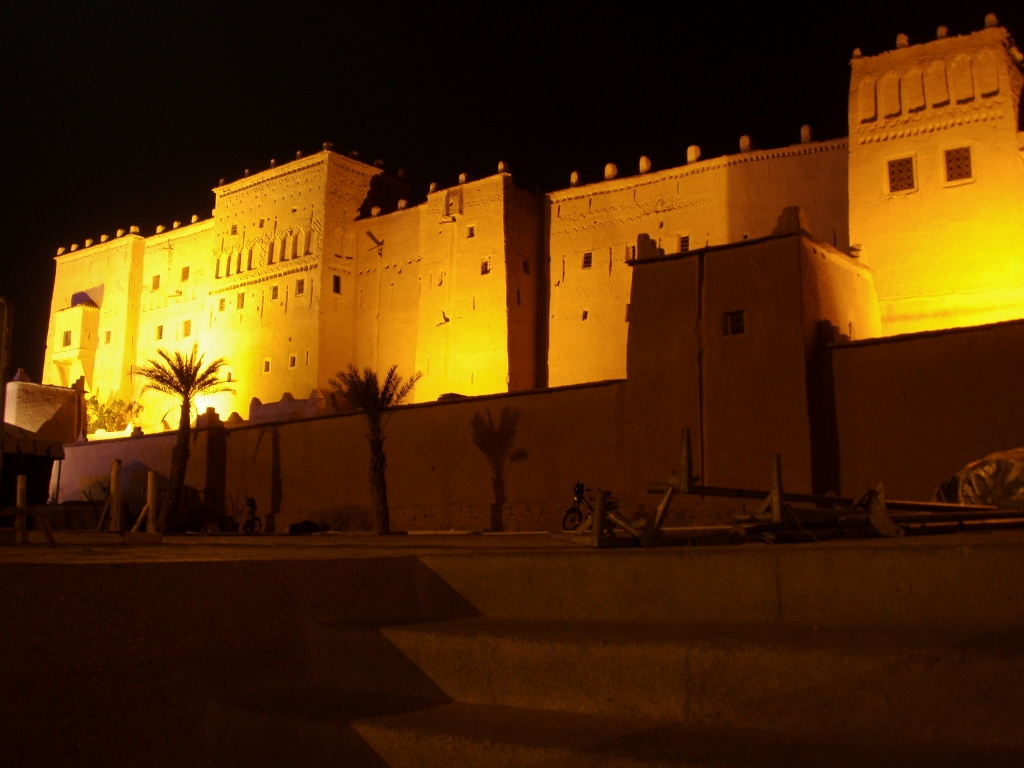 Ouarzazate, a detail
Ouarzazate, a detail
What was especially interesting that evening was that I came across two different musical experiences. It was very entertaining and colourful, and both were definitely very popular.
I also made a few photos of the second “concert,” so here they are:
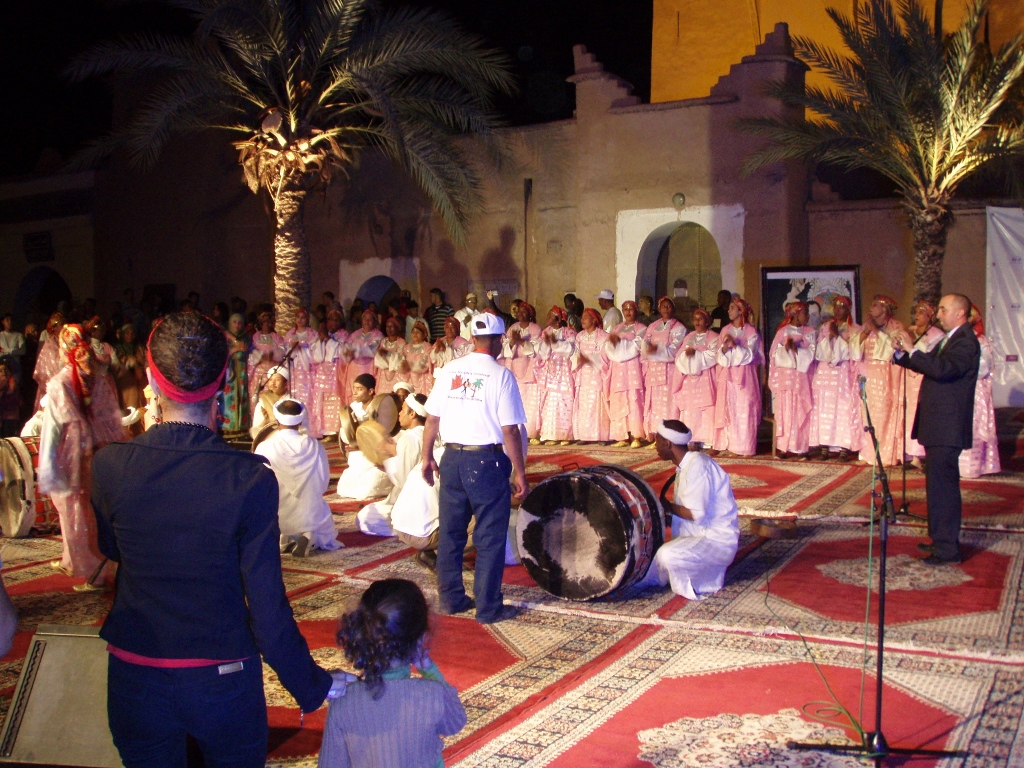 Traditional music in Ouarzazate
Traditional music in Ouarzazate
 Traditional music in Ouarzazate
Traditional music in Ouarzazate
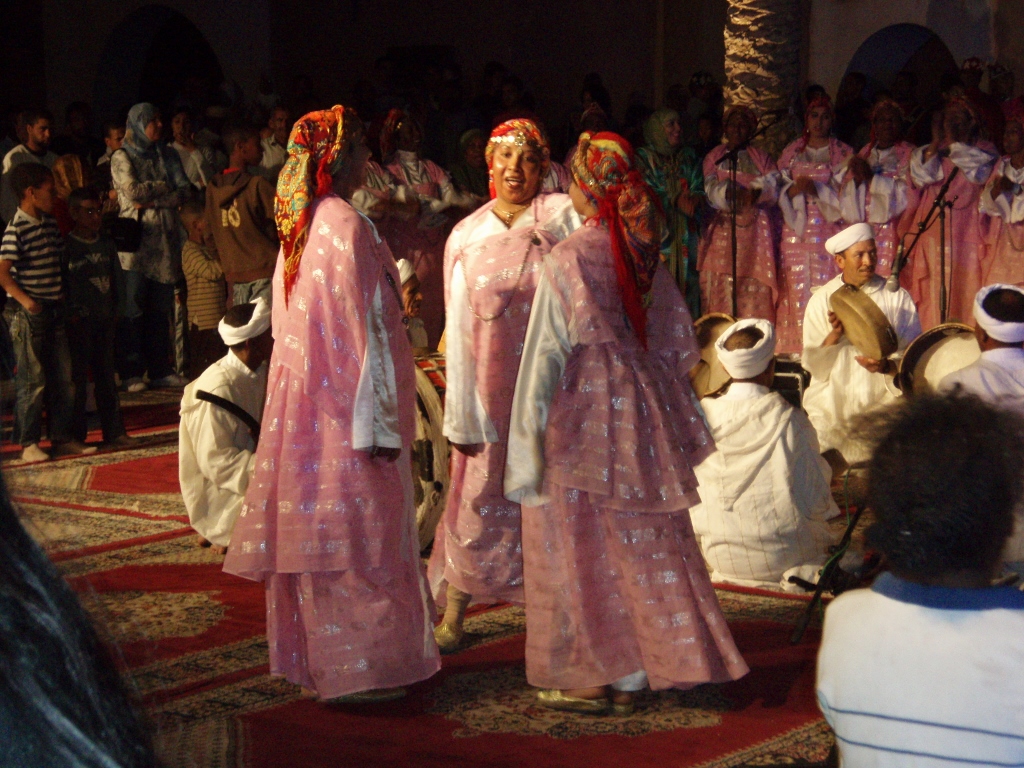 Traditional music in Ouarzazate
Traditional music in Ouarzazate
Still, although the streets of Ouarzazate were lively and fun, I didn’t stay out long and returned to the hotel to go to sleep.
The next morning, I woke up before 7 a.m. and although I still felt tired, I decided to get moving.
My plan was to visit the village of Ait-Ben-Haddou, which is about 30 km from Ouarzazate, meaning just over half an hour's drive by car.
Once again, there was no other transportation available except for a "grand taxi," but in any case, I arrived in the village fairly early.
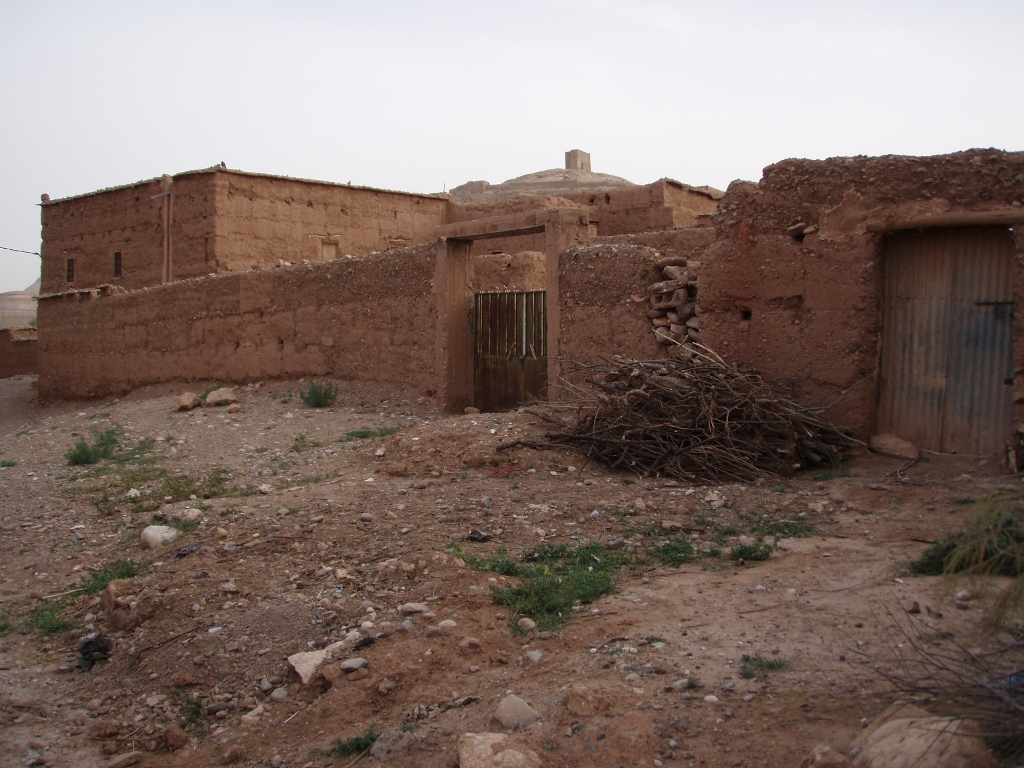 Ait-Ben-Haddou village
Ait-Ben-Haddou village
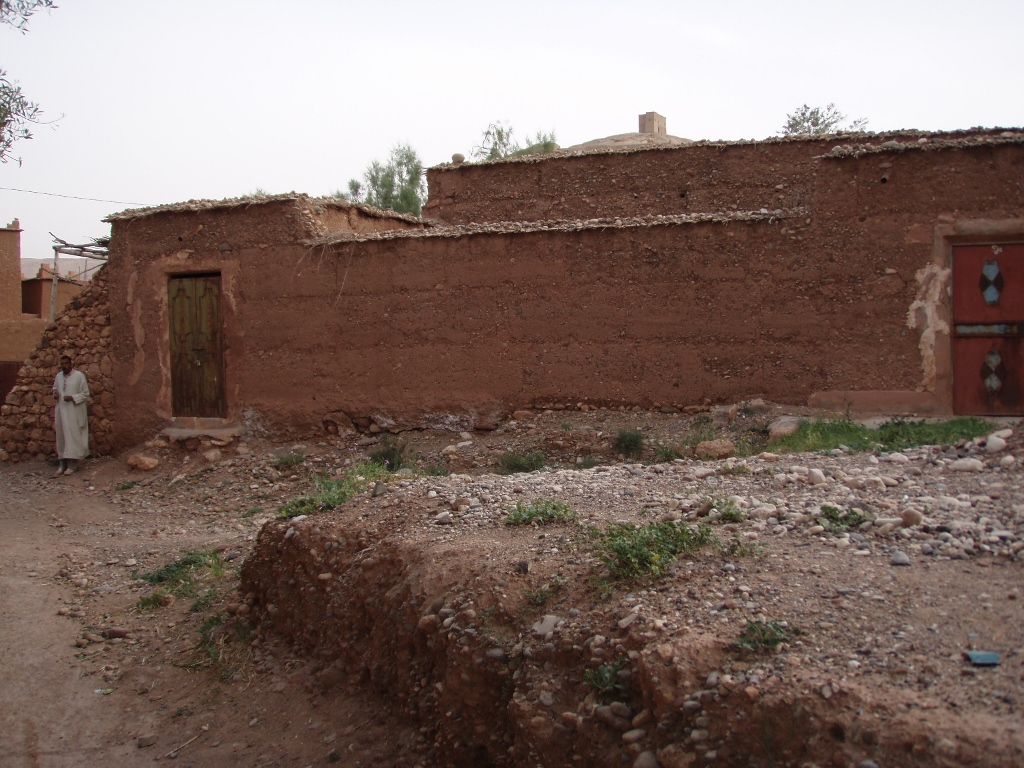 Ait-Ben-Haddou village
Ait-Ben-Haddou village
 Ait-Ben-Haddou village
Ait-Ben-Haddou village
When one looks at the previous photos, they probably wonder why I even came here. And at first glance, that question makes perfect sense, but...
This is a contemporary village that contains a ksar, a fortified village, of the same name considered to be the best-preserved of its kind in the entire Greater Atlas region. This place is regarded as significant, especially in terms of Moroccan earthen architecture and has been inscribed on the UNESCO World Heritage List.
In addition, the Ait-Ben-Haddou ksar has been used as a filming location for numerous well-known movies. The older ones include Lawrence of Arabia and Jesus of Nazareth, but there were also The Mummy, Alexander, Babel, etc., to name just a few more recent productions. The money earned from filming these movies was partly used to maintain and restore the site as needed.
In any case, I arrived here quite early (before 8 a.m.), and although it was rather chilly, I was glad not to be surrounded by crowds of tourists, which is usually the case at places like this. By the time I had finished exploring the ksar of Ait-Ben-Haddou, I could already see a stream of tourist buses arriving.
But, in all of this, there was one problem. The ksar is located on the opposite side of the river from the village of Ait-Ben-Haddou. The river in question is the Ounila River. At first, I just stood there a bit confused, observing the whole situation from the hill where the village is located.
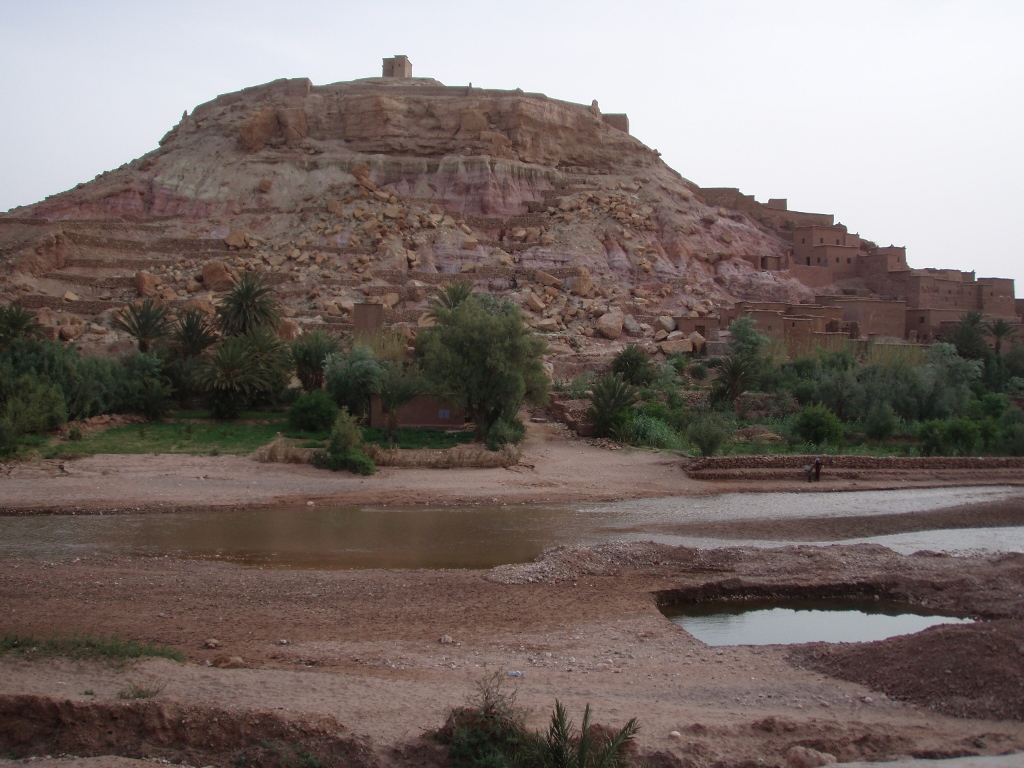 Ait-Ben-Haddou ksar
Ait-Ben-Haddou ksar
Since there was no point in staying up there, I walked down to the river to get a better look – both at the ksar itself and at the river.
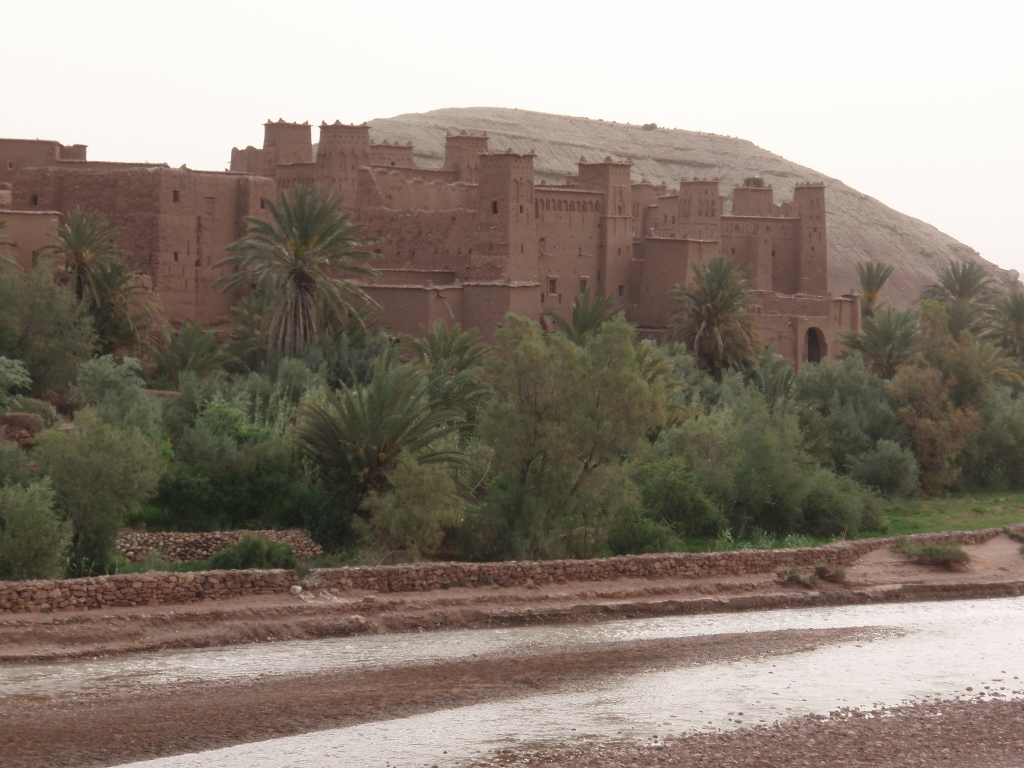 Ait-Ben-Haddou ksar
Ait-Ben-Haddou ksar
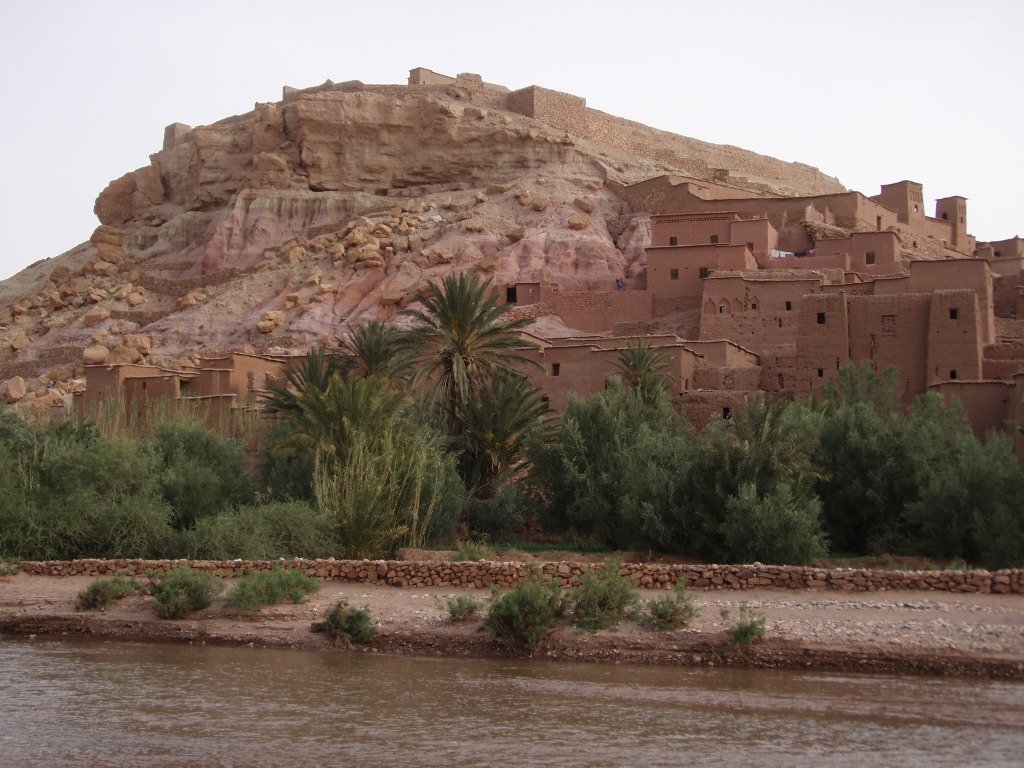 Ait-Ben-Haddou ksar
Ait-Ben-Haddou ksar
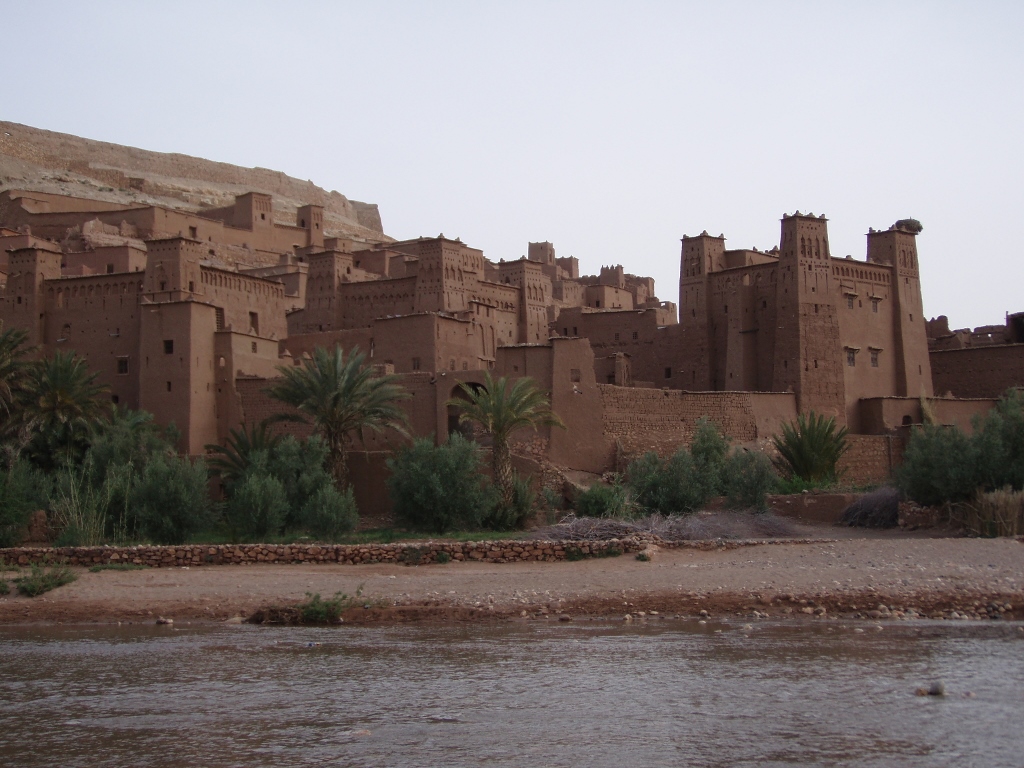 Ait-Ben-Haddou ksar
Ait-Ben-Haddou ksar
And that’s how I realised I had to walk through the river. At first, I was a bit confused by the unexpected situation, but then I was thrilled. Not only did it all seem wonderfully exotic to me, but I was even more delighted by the sheer coincidence that on this particular day, I had set out in the perfect footwear – my plastic rubber clogs.
It was the first day I wore them for “urban” sightseeing. The previous morning I wore them when I went to the Sahara, but that made sense since I knew I’d be walking through sand. Here, I thought I was just going to explore a village, so logically, I should have worn my usual shoes. For some unclear reason, it occurred to me that I should wear those clogs and it turned out to be the perfect choice.
So, I rolled up the legs of my pants and headed across. The water was much shallower and calmer than I had expected, so there were no problems at all. It was just quite cold, but I survived.
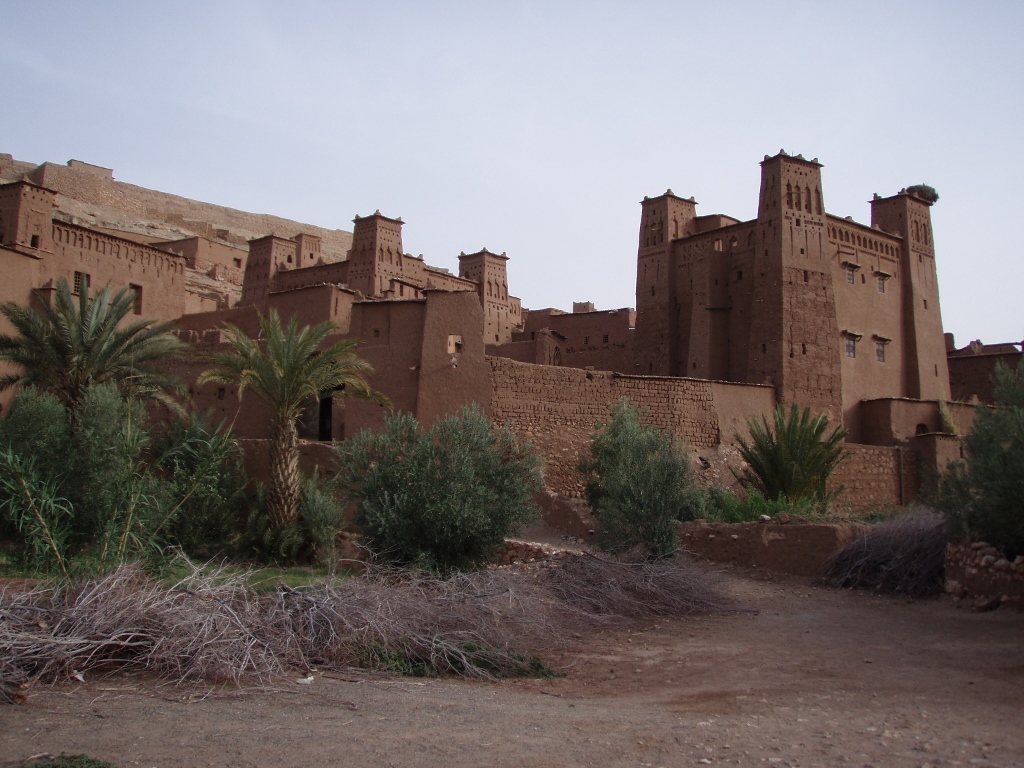 Ait-Ben-Haddou ksar
Ait-Ben-Haddou ksar
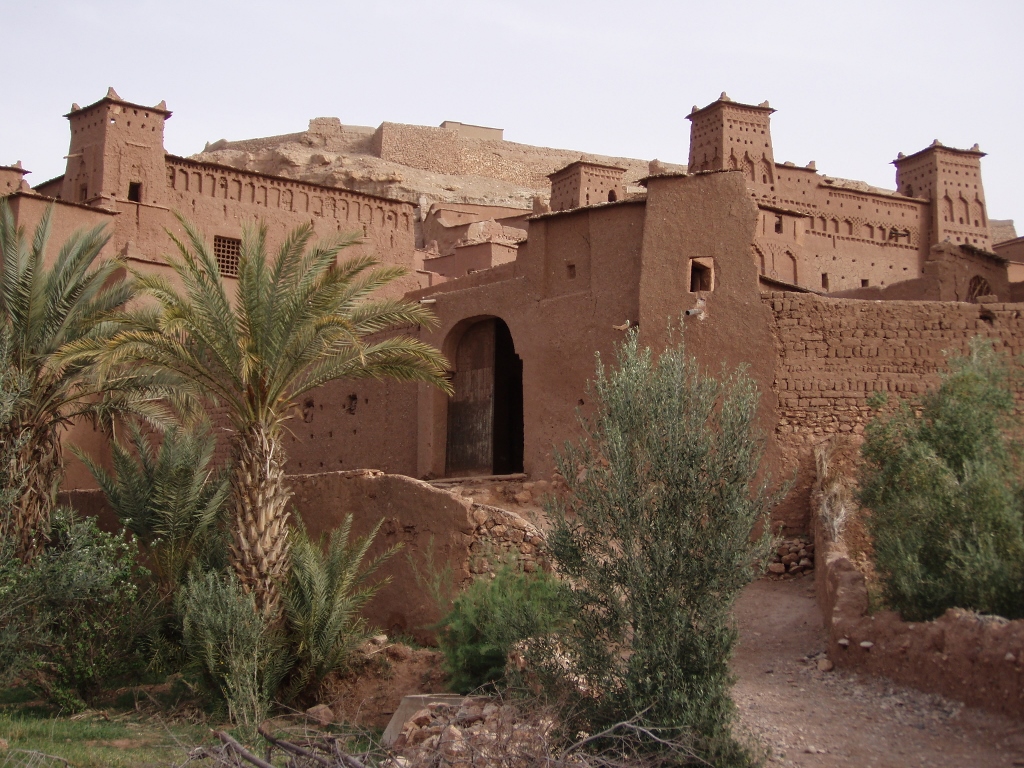 Ait-Ben-Haddou ksar
Ait-Ben-Haddou ksar
The site of Ait-Ben-Haddou is the name for a historic ighrem or ksar located on the former caravan route between Marrakesh and the Sahara, on the southern slopes of the High Atlas. In appearance, it resembles the ancient traditional kasbahs (fortified settlements with a citadel) that were once built in this part of Africa.
It consists of a cluster of closely built structures made of rammed earth, adobe, clay bricks, and wood, all surrounded by high defensive walls. At the corners, there are tall towers. Some of these buildings are modest, while others, due to various decorative details, appear almost lavish, though everything is made from earth and wood.
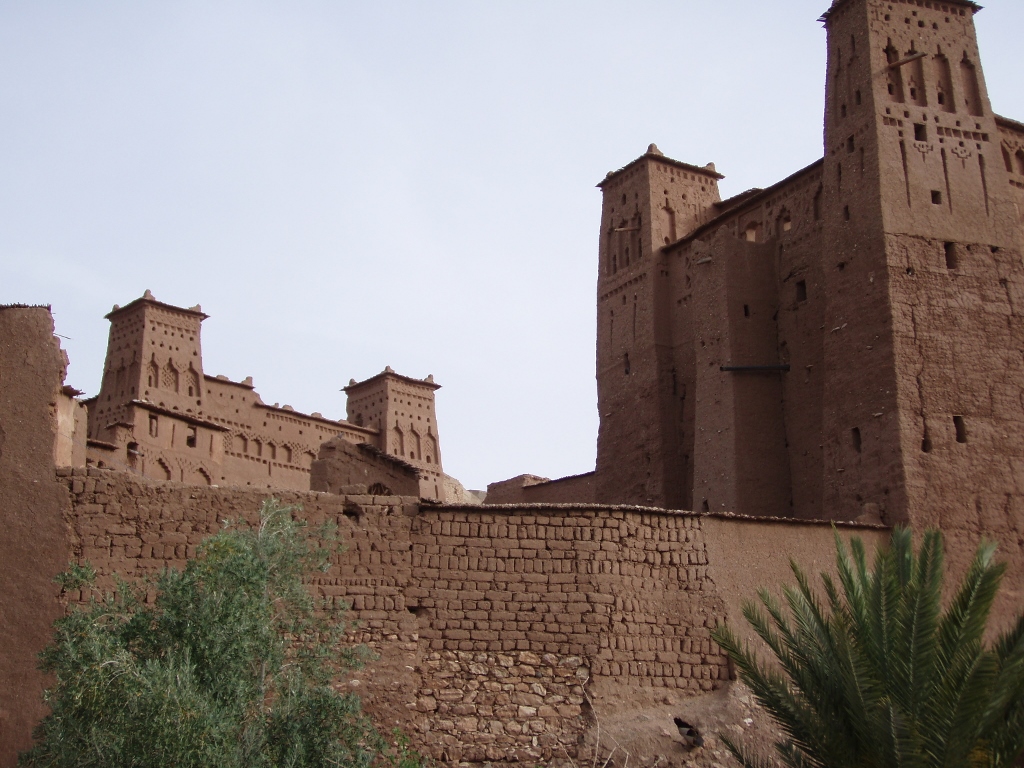 Ait-Ben-Haddou ksar
Ait-Ben-Haddou ksar
 Ait-Ben-Haddou ksar
Ait-Ben-Haddou ksar
Research has shown that the oldest buildings were constructed in the 17th century, although this type of structure and building techniques have existed in southern Morocco long before that. A modern settlement was later built on the opposite side of the river.
I don’t actually have much to say about this site, but it was truly remarkable and picturesque, which will be evident from the numerous photos I took here. I thoroughly enjoyed both the views and the details, as well as the fact that I was alone while exploring, that is, there were no other visitors around. I don’t have anything against people in general, but tourists often get on my nerves.
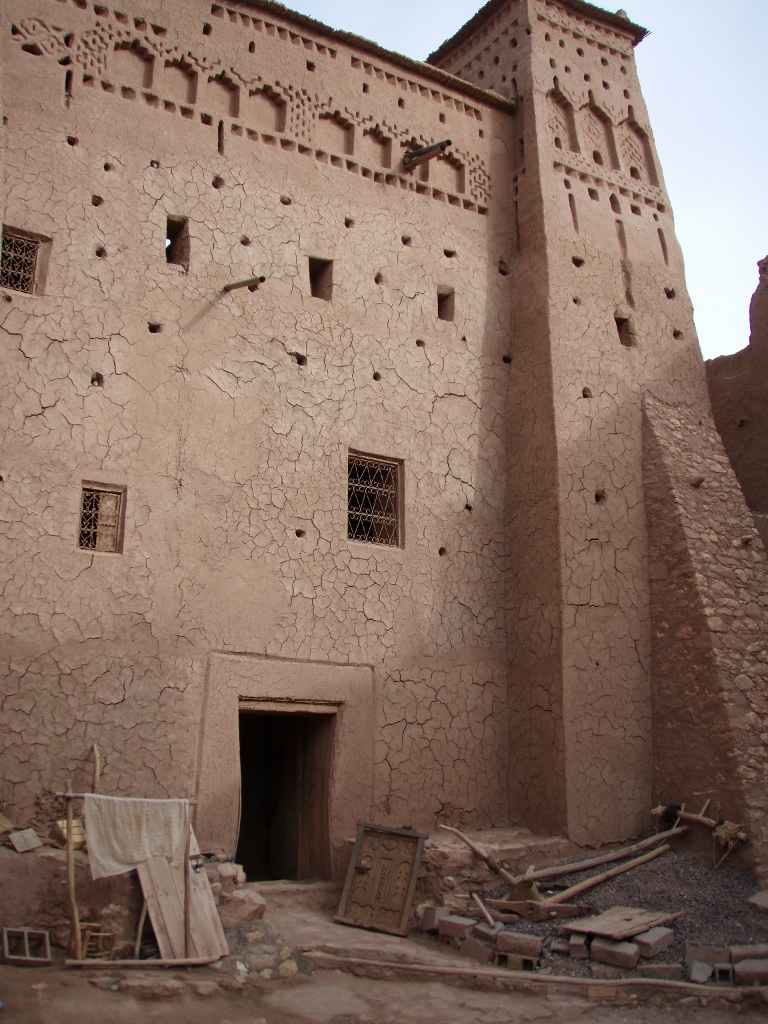 Ait-Ben-Haddou ksar, a detail
Ait-Ben-Haddou ksar, a detail
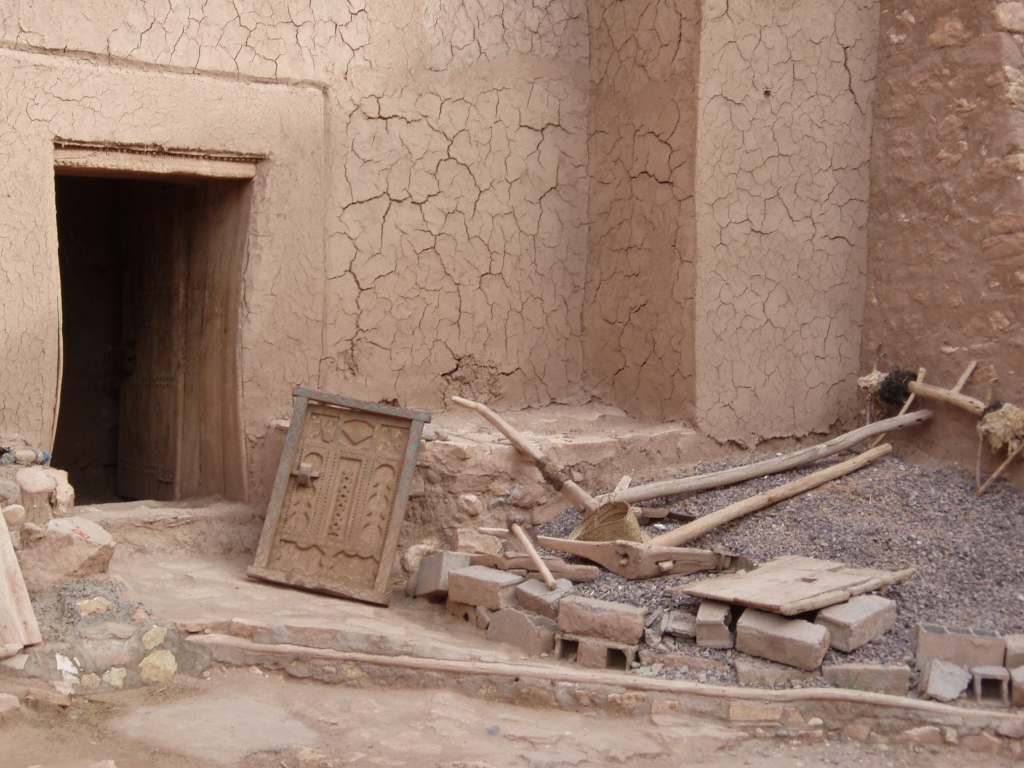 Ait-Ben-Haddou ksar, a detail
Ait-Ben-Haddou ksar, a detail
Within the ksar, there is a mosque, a caravanserai, a public square, two cemeteries (one Muslim and one Jewish), as well as several kasbahs (castle-like fortifications), but it wasn’t important to me to see and visit each one individually. I simply enjoyed the overall impression.
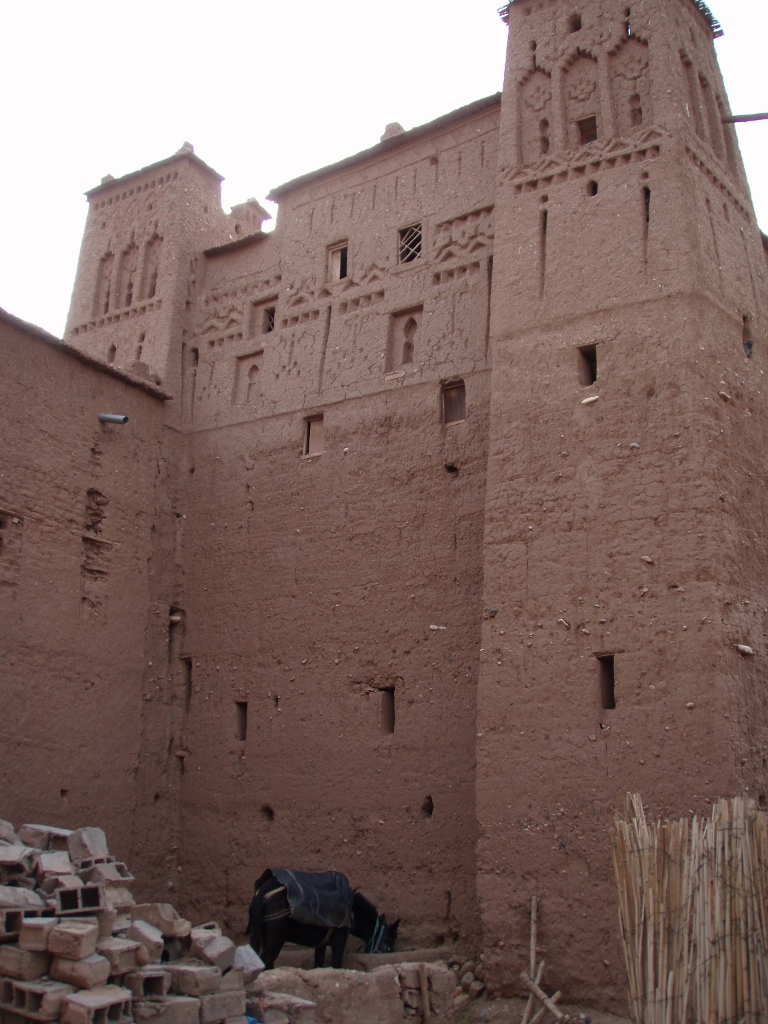 Ait-Ben-Haddou ksar, a detail
Ait-Ben-Haddou ksar, a detail
Here, it's also possible to climb to the higher parts of the ksar, which I took advantage of by thoroughly exploring the site, following the streets and passageways, as well as entering some of the buildings and climbing the stairs inside them.
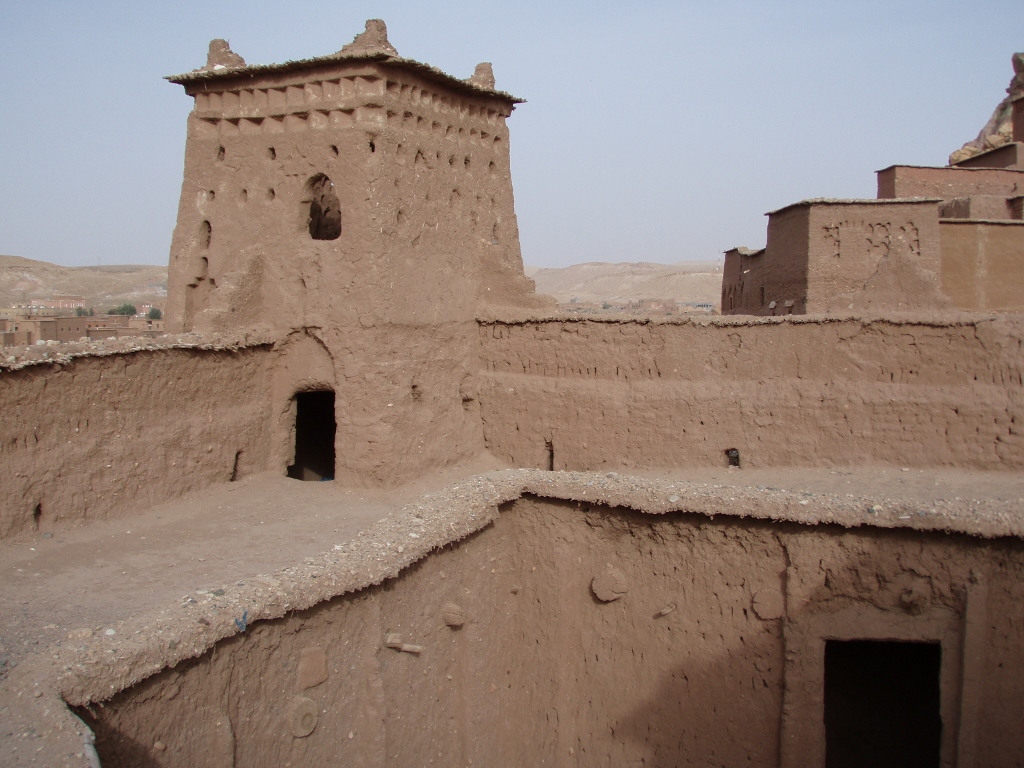 Ait-Ben-Haddou ksar, a detail
Ait-Ben-Haddou ksar, a detail
 Ait-Ben-Haddou ksar, a detail
Ait-Ben-Haddou ksar, a detail
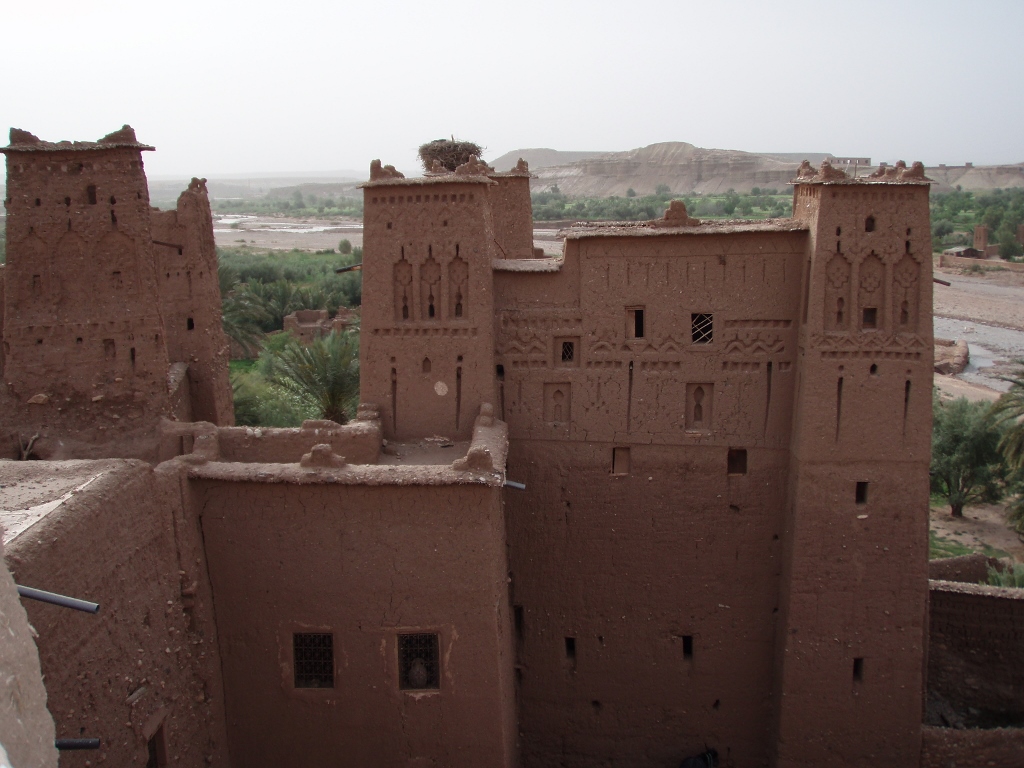 Ait-Ben-Haddou ksar, a detail
Ait-Ben-Haddou ksar, a detail
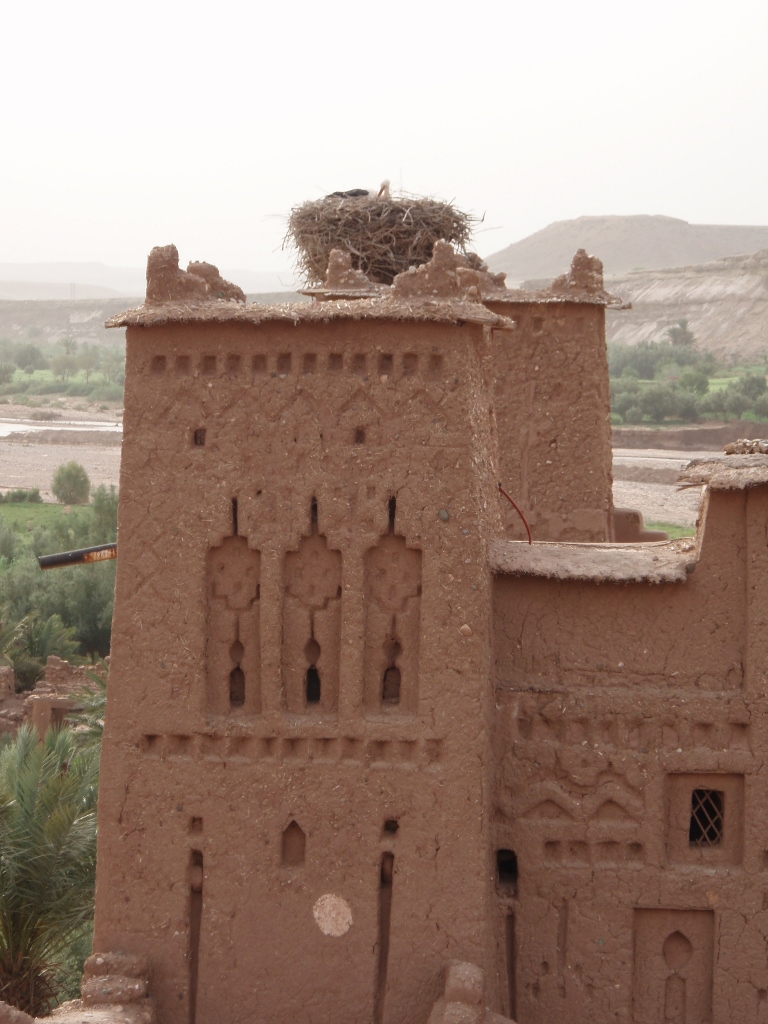 Ait-Ben-Haddou ksar, a detail
Ait-Ben-Haddou ksar, a detail
 Ait-Ben-Haddou ksar, a detail
Ait-Ben-Haddou ksar, a detail
Here and there, I managed to peek through some openings, and there were some truly lovely surprises.
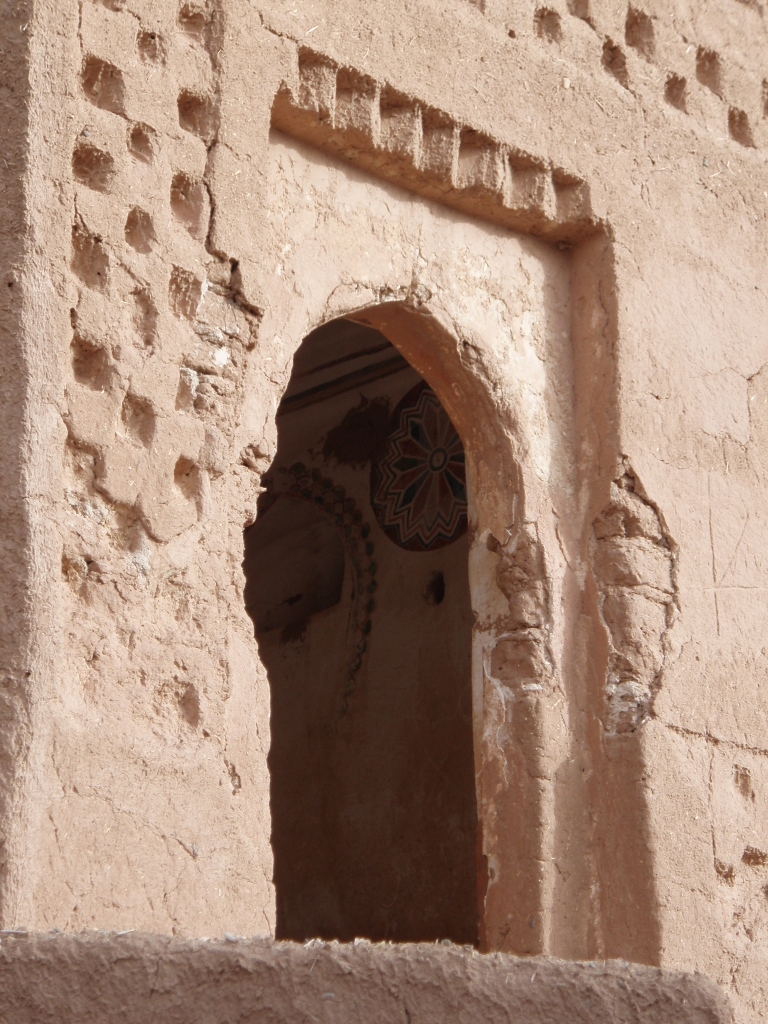 Ait-Ben-Haddou ksar, a detail
Ait-Ben-Haddou ksar, a detail
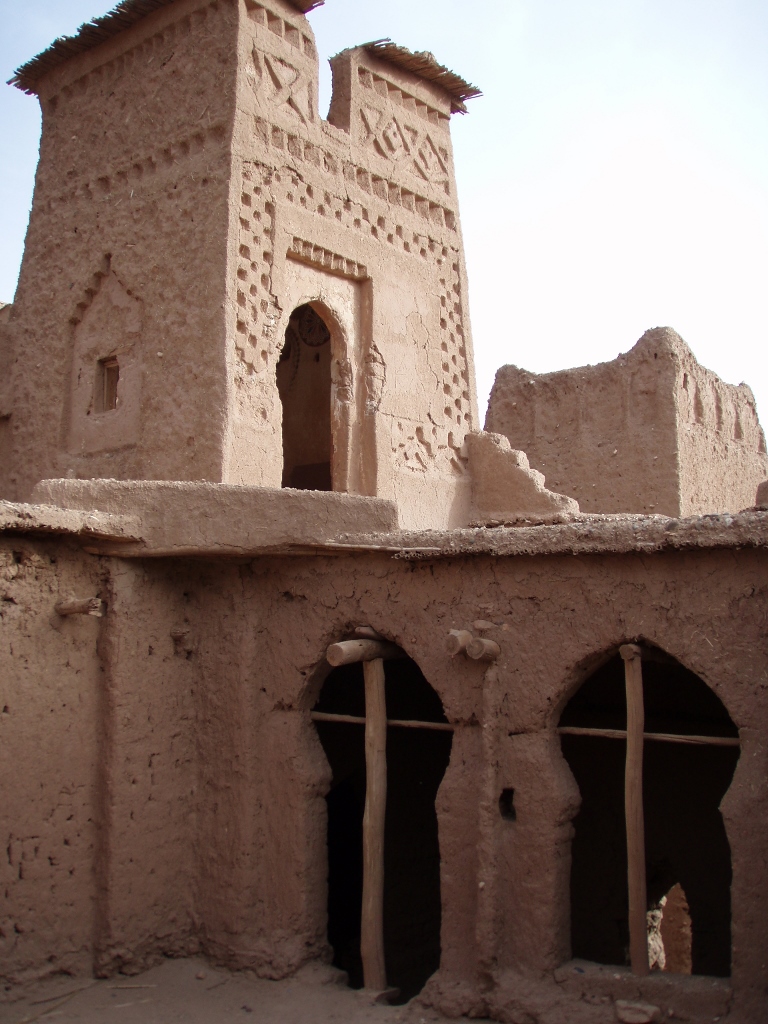 Ait-Ben-Haddou ksar, a detail
Ait-Ben-Haddou ksar, a detail
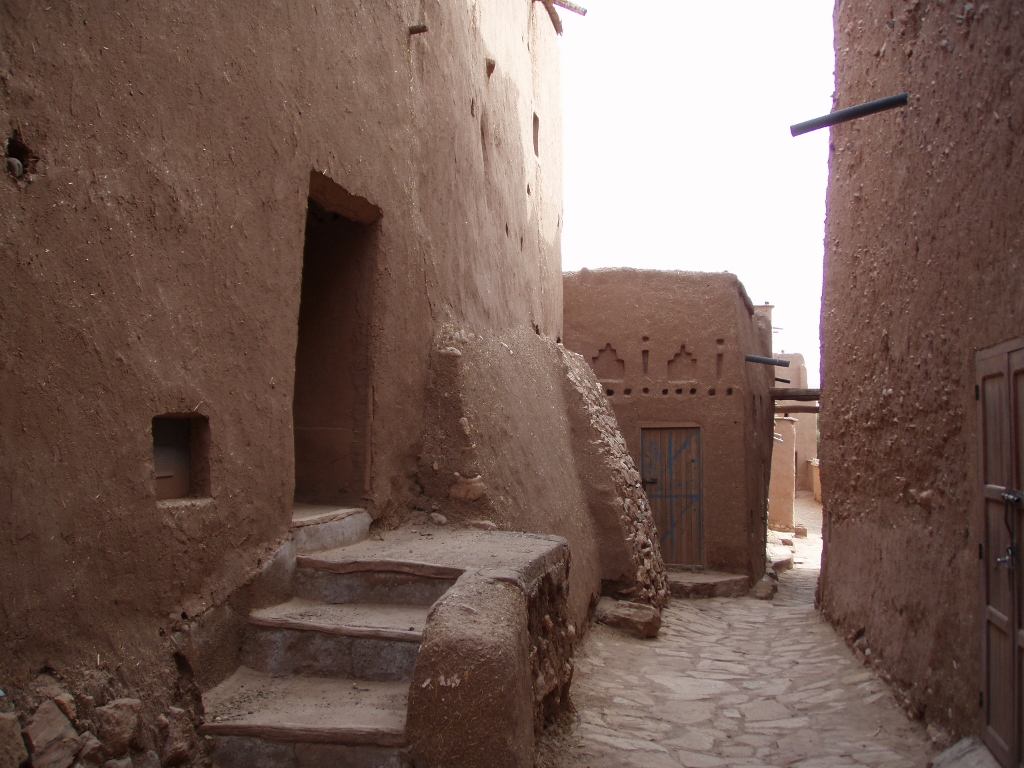 Ait-Ben-Haddou ksar, a detail
Ait-Ben-Haddou ksar, a detail
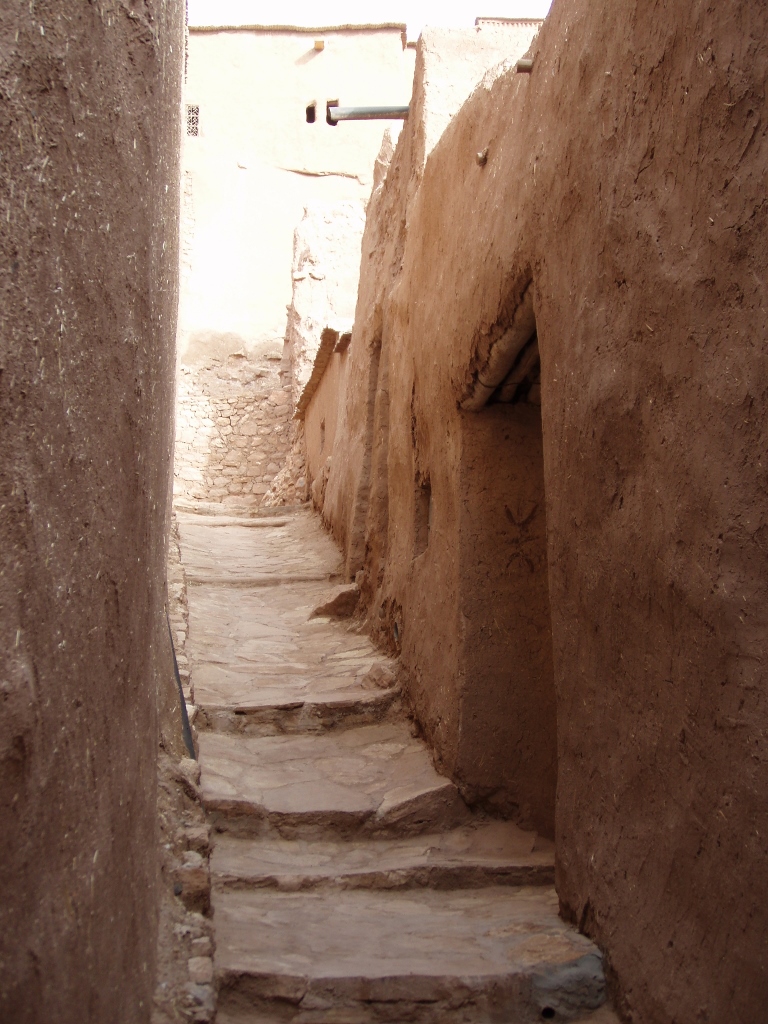 Ait-Ben-Haddou ksar, a detail
Ait-Ben-Haddou ksar, a detail
As I walked through the Ait-Ben-Haddou ksar, I had the impression that no one lived there. Still, at one point I did come across some local children, but that was the only encounter I had during my time there (not counting the person at the entrance where I paid the admission fee).
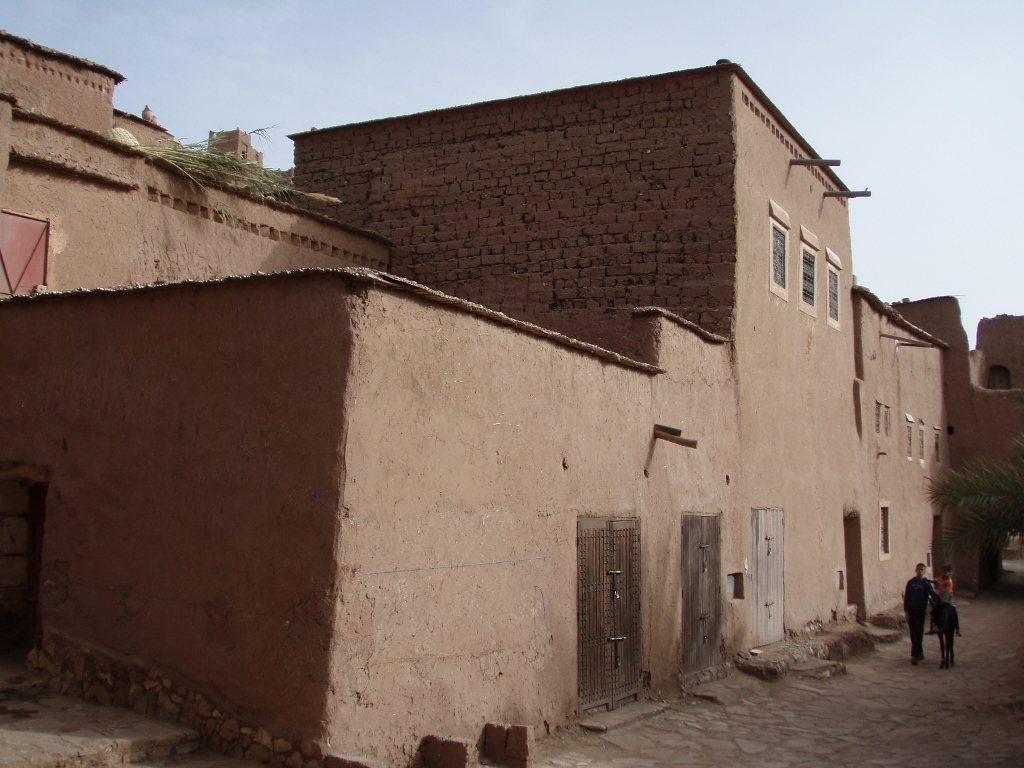 Ait-Ben-Haddou ksar, a detail
Ait-Ben-Haddou ksar, a detail
 Ait-Ben-Haddou ksar, a detail
Ait-Ben-Haddou ksar, a detail
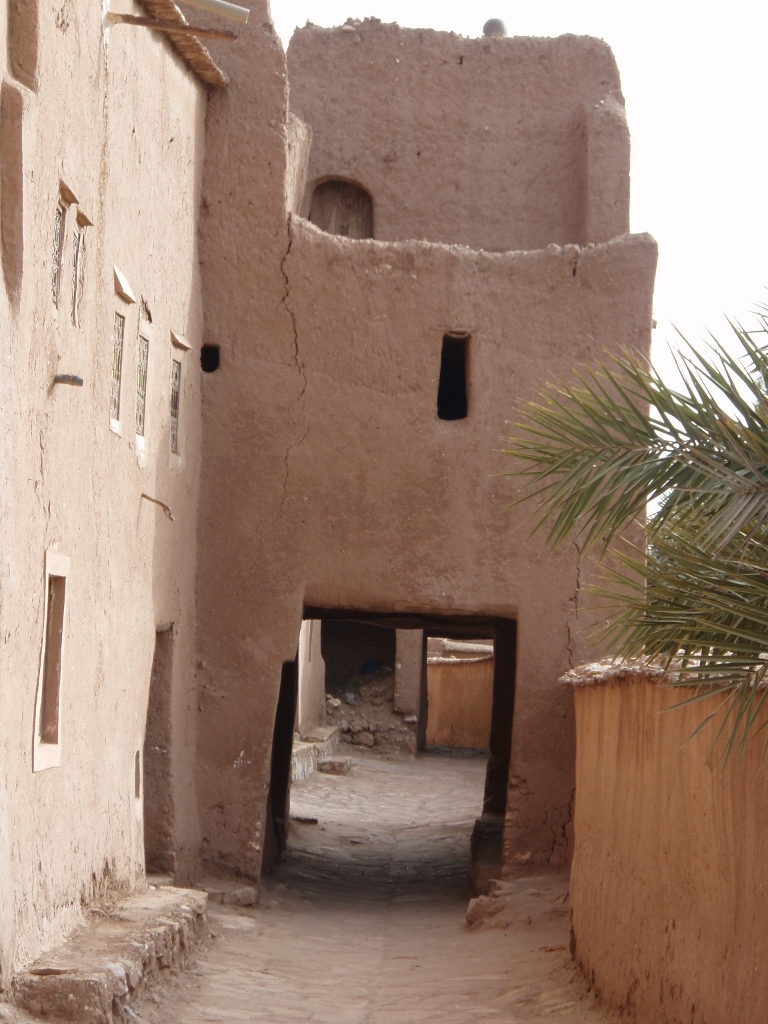 Ait-Ben-Haddou ksar, a detail
Ait-Ben-Haddou ksar, a detail
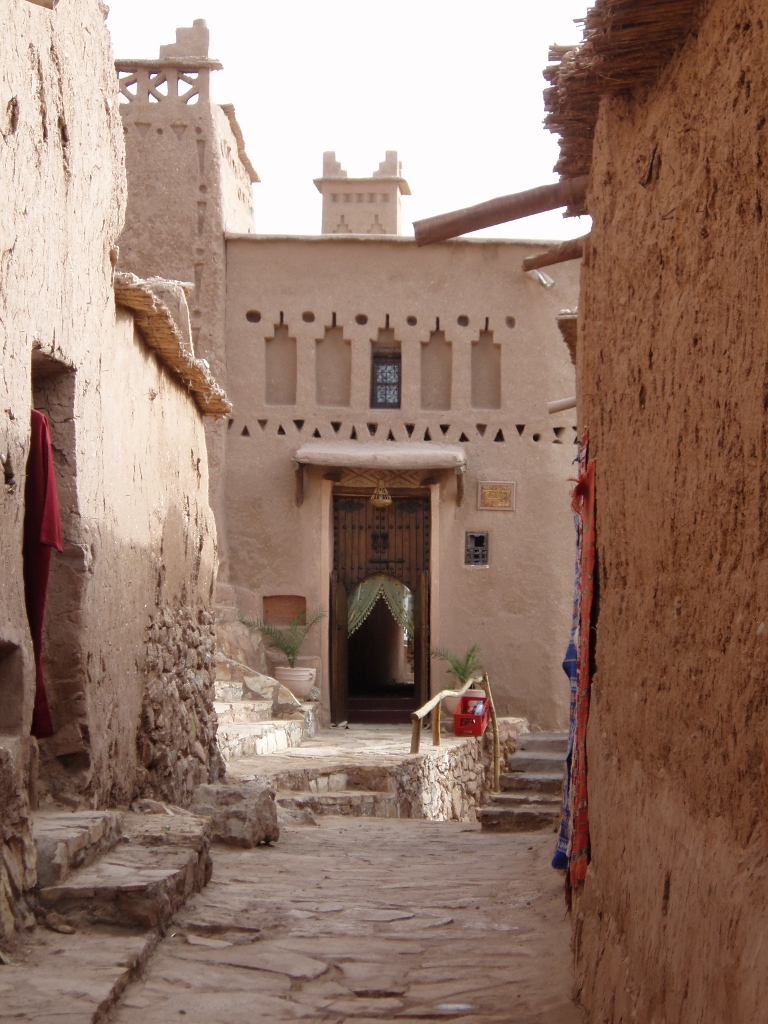 Ait-Ben-Haddou ksar, a detail
Ait-Ben-Haddou ksar, a detail
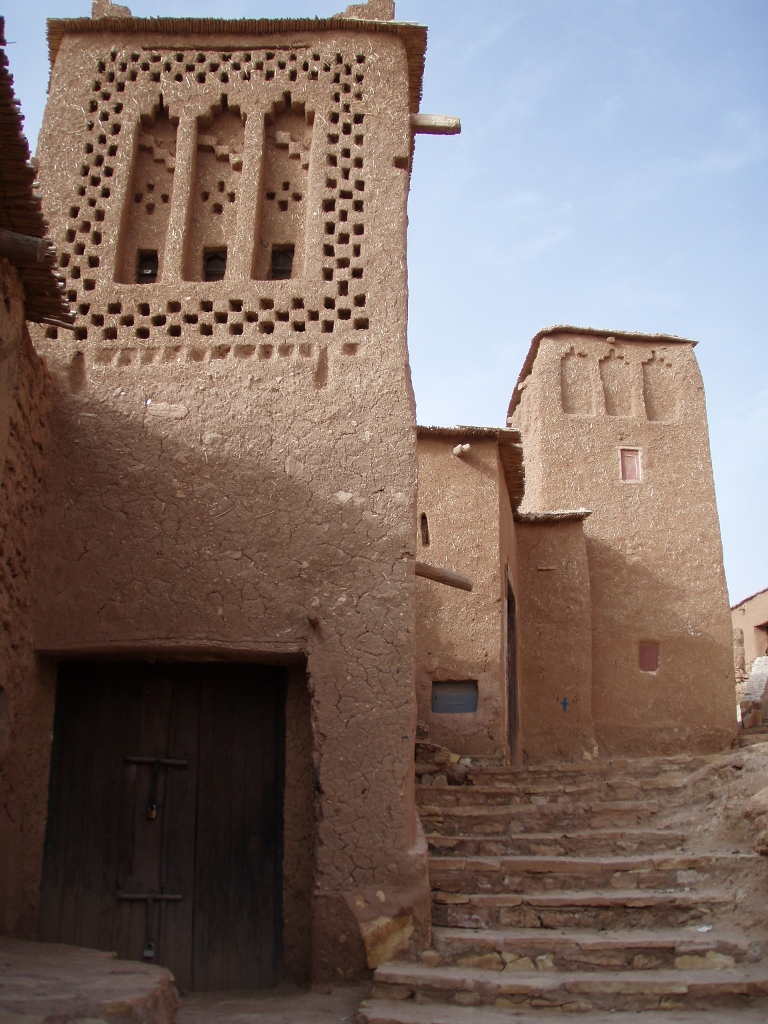 Ait-Ben-Haddou ksar, a detail
Ait-Ben-Haddou ksar, a detail
 Ait-Ben-Haddou ksar, a detail
Ait-Ben-Haddou ksar, a detail
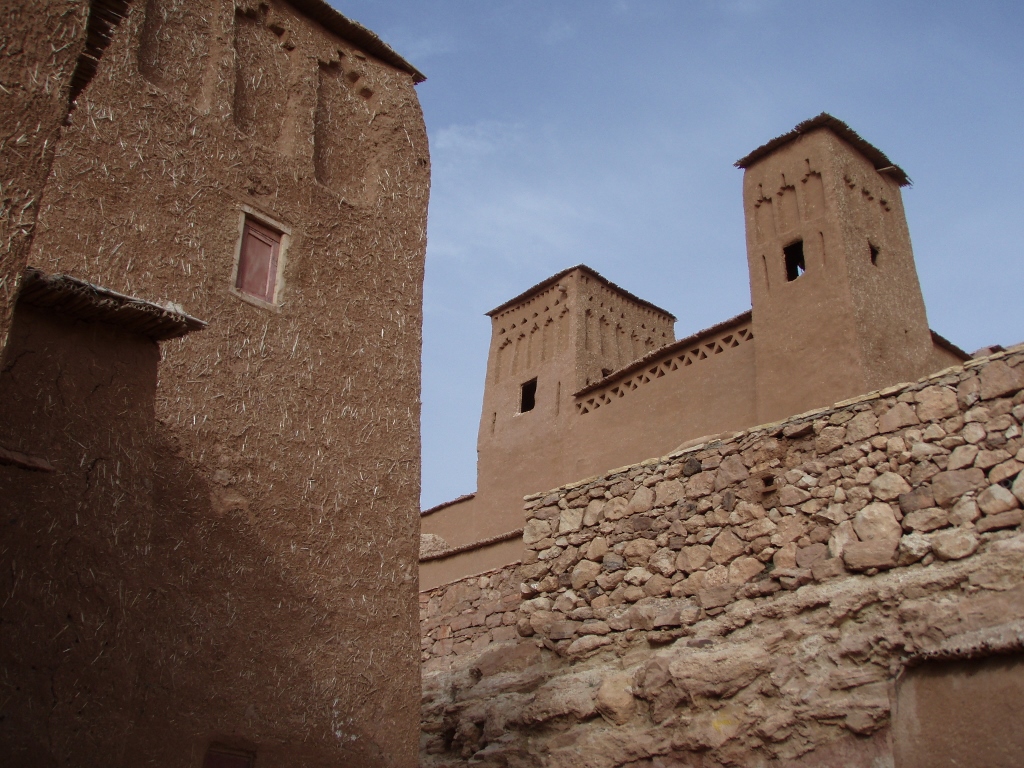 Ait-Ben-Haddou ksar, a detail
Ait-Ben-Haddou ksar, a detail
At one point, I reached an area that offered an outstanding view of the river, parts of the ksar, sections of the modern Moroccan village, as well as the surrounding landscape.
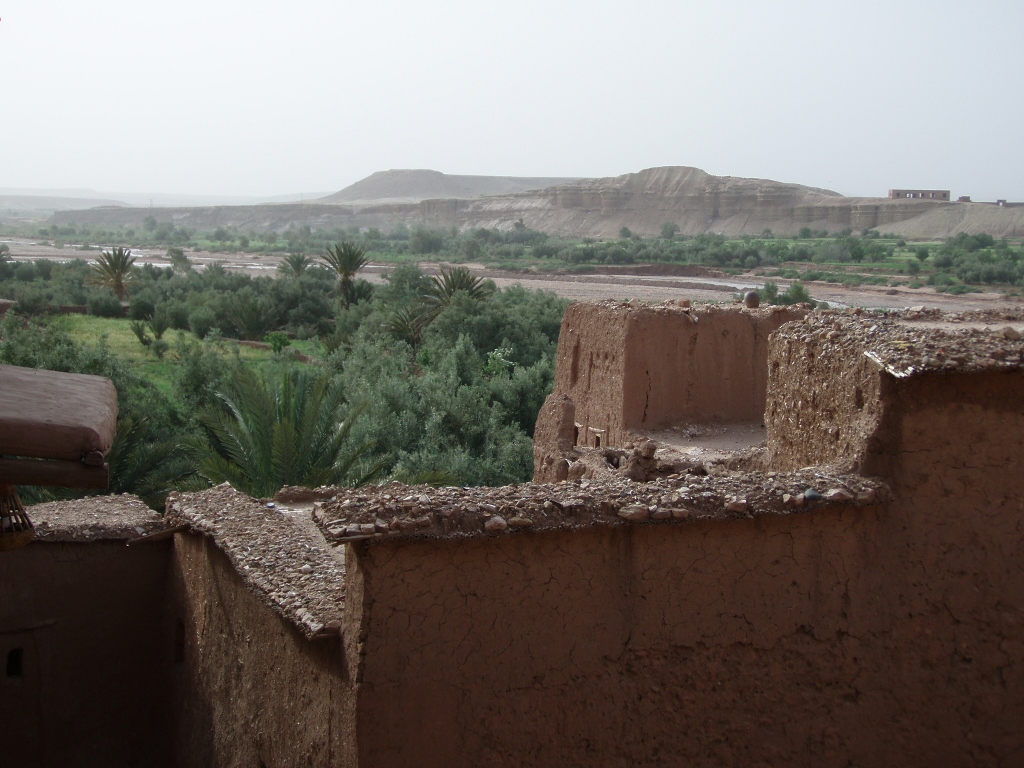 Ait-Ben-Haddou ksar, a detail
Ait-Ben-Haddou ksar, a detail
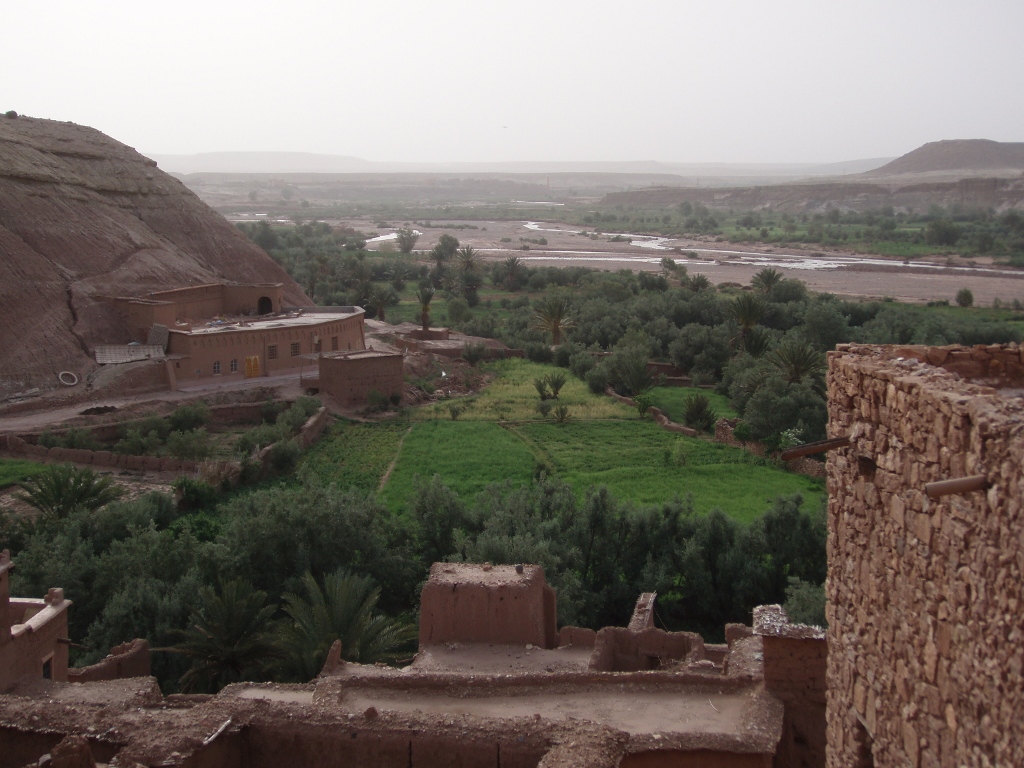 Ait-Ben-Haddou ksar, a detail
Ait-Ben-Haddou ksar, a detail
Then I wandered back into the streets of the ksar and later I came upon yet another stunning viewpoint.
 Ait-Ben-Haddou ksar, a detail
Ait-Ben-Haddou ksar, a detail
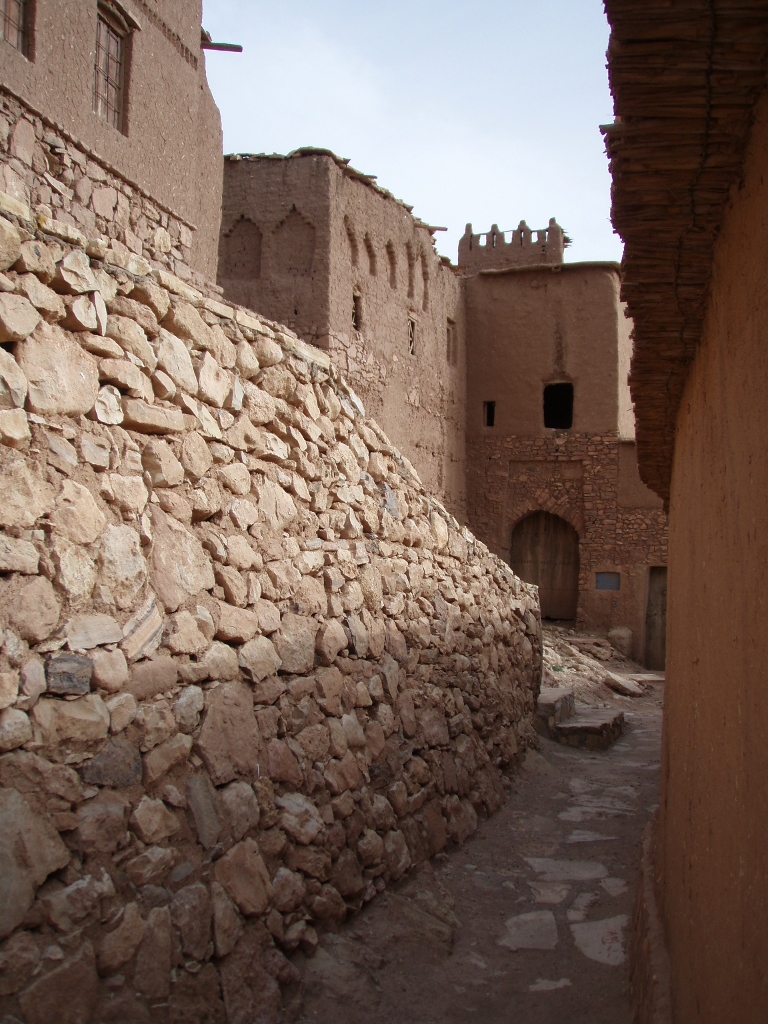 Ait-Ben-Haddou ksar, a detail
Ait-Ben-Haddou ksar, a detail
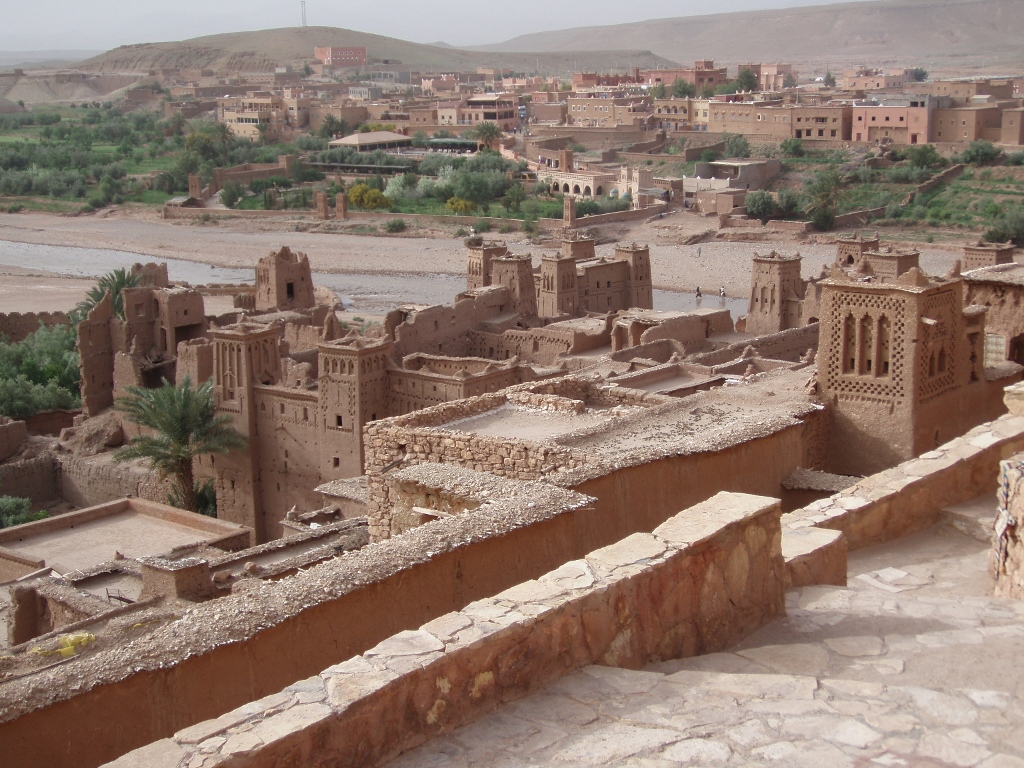 Ait-Ben-Haddou ksar, a detail
Ait-Ben-Haddou ksar, a detail
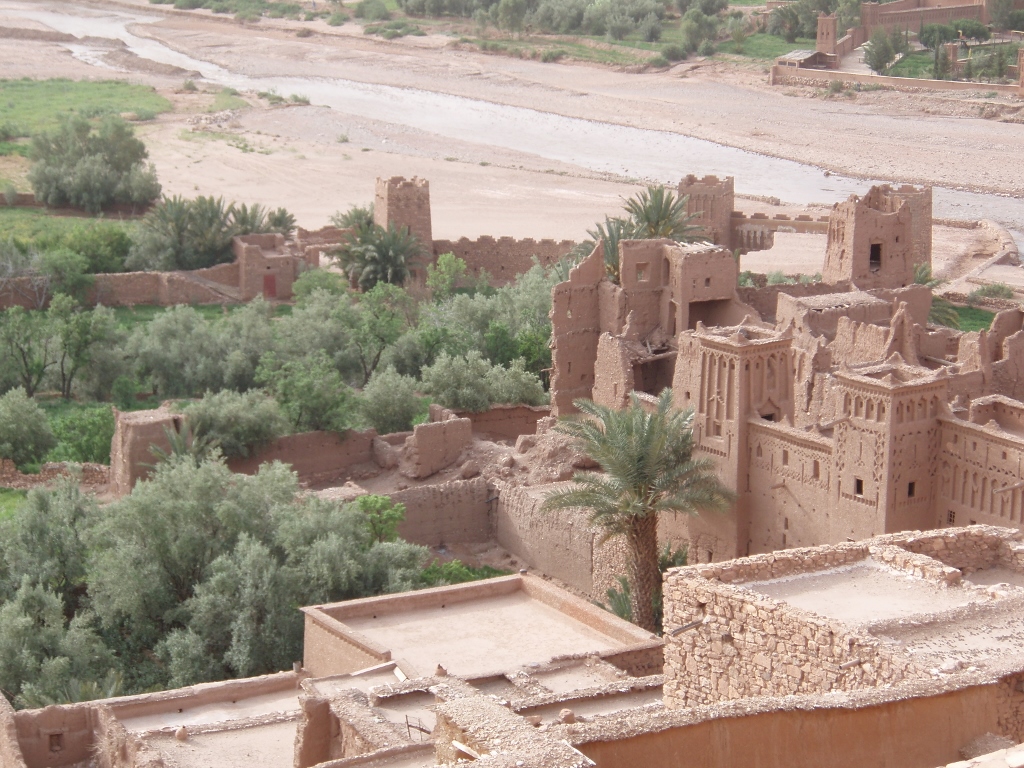 Ait-Ben-Haddou ksar, a detail
Ait-Ben-Haddou ksar, a detail
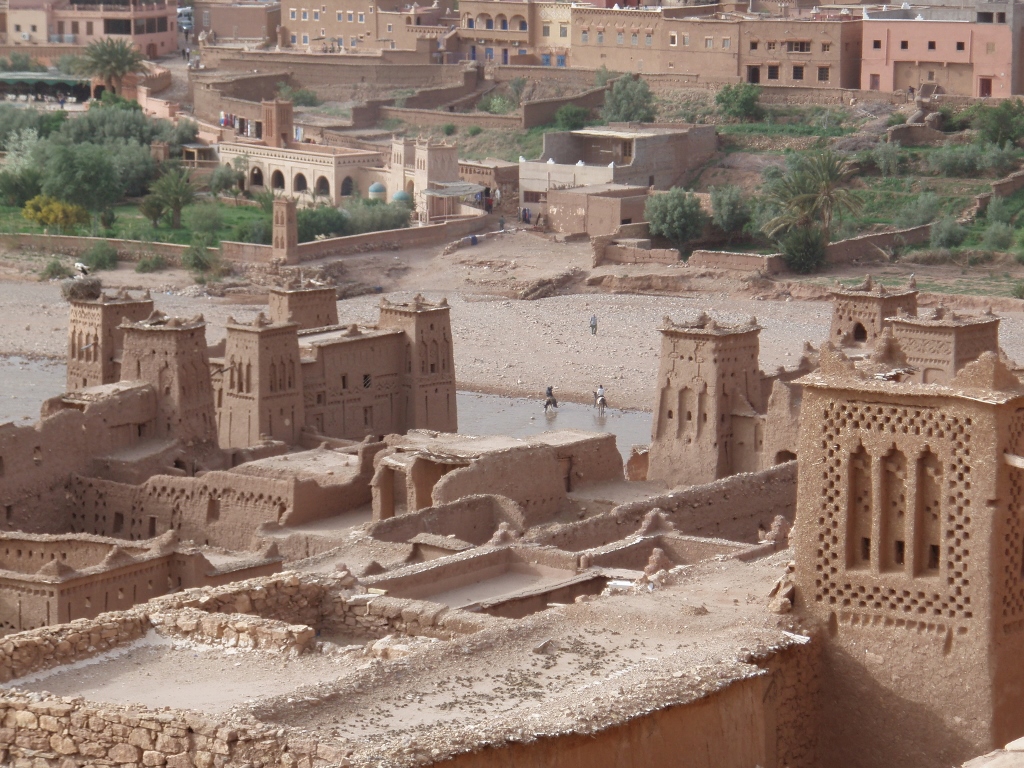 Ait-Ben-Haddou ksar, a detail
Ait-Ben-Haddou ksar, a detail
What followed was more weaving through various streets and passageways, a visit to yet another viewpoint, and then I was ready to start heading back towards the river.
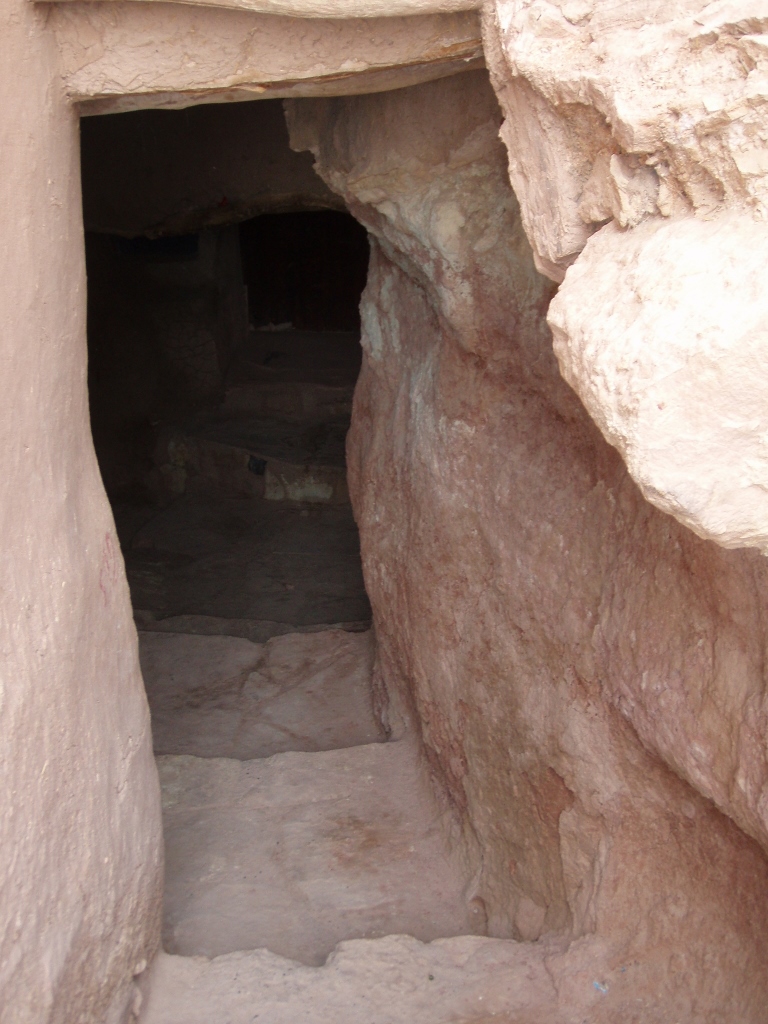 Ait-Ben-Haddou ksar, a detail
Ait-Ben-Haddou ksar, a detail
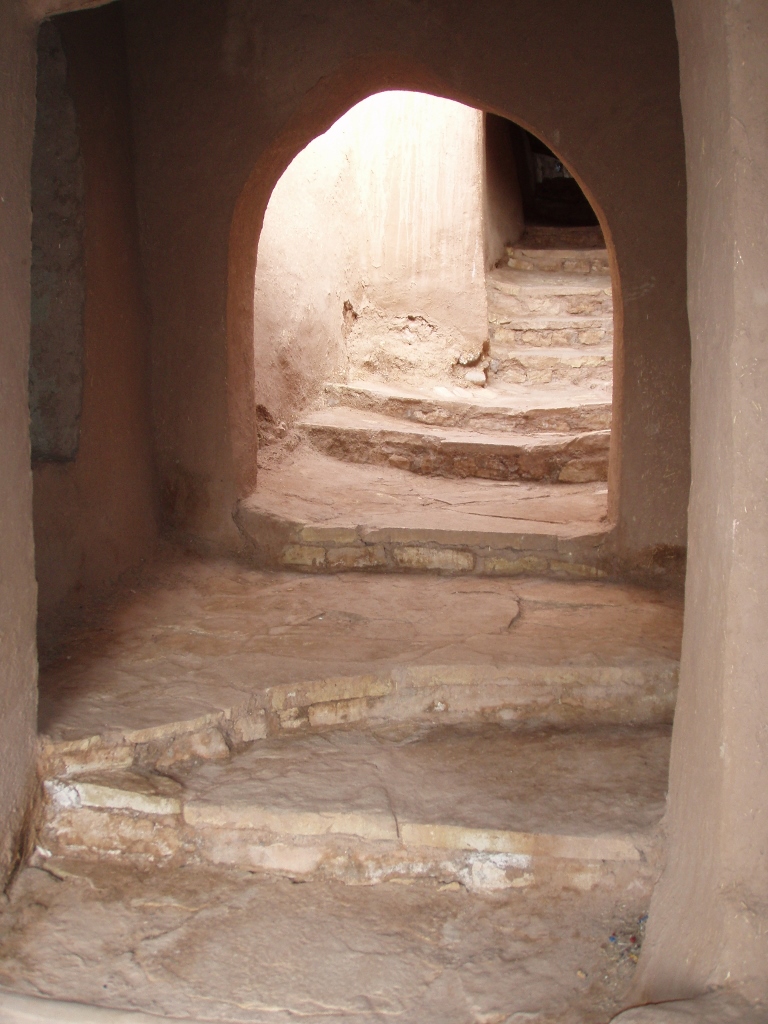 Ait-Ben-Haddou ksar, a detail
Ait-Ben-Haddou ksar, a detail
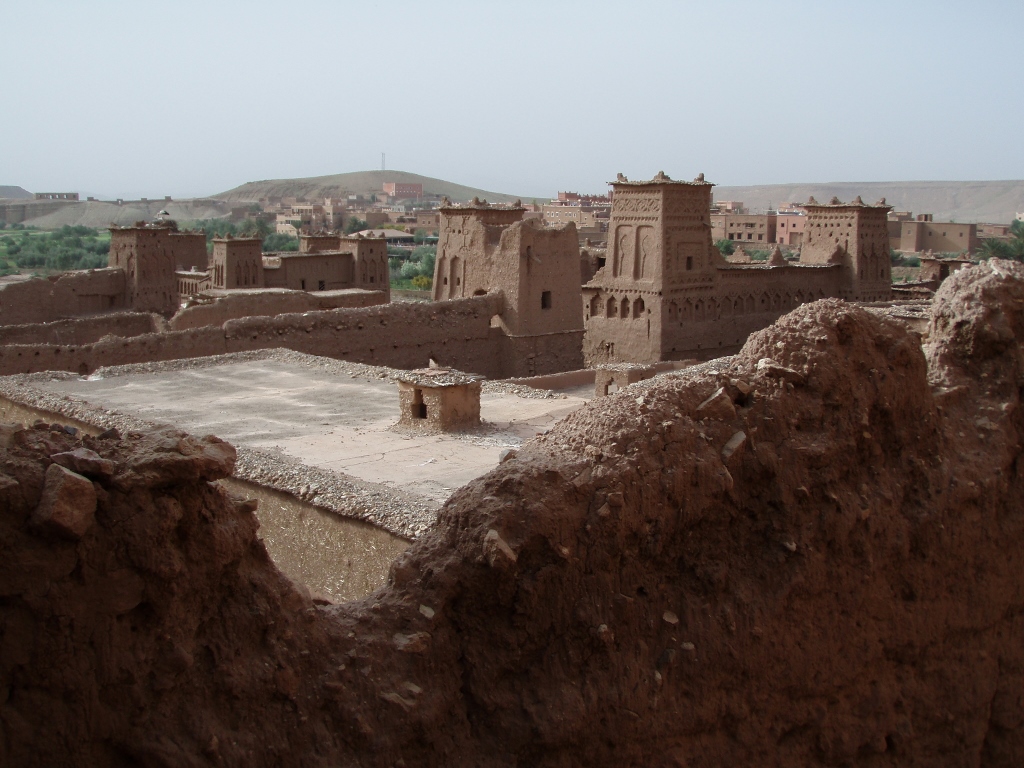 Ait-Ben-Haddou ksar, a detail
Ait-Ben-Haddou ksar, a detail
When I returned to the river, the situation had changed significantly. I have already mentioned that tourist buses had arrived in the meantime and then local residents joined in with their horses and donkeys, offering rides to help the newly arrived visitors cross the river.
For me, it was beneath my dignity to now take the “easier way,” so I rolled up my pant legs again and walked across the river on foot. I just looked back one last time.
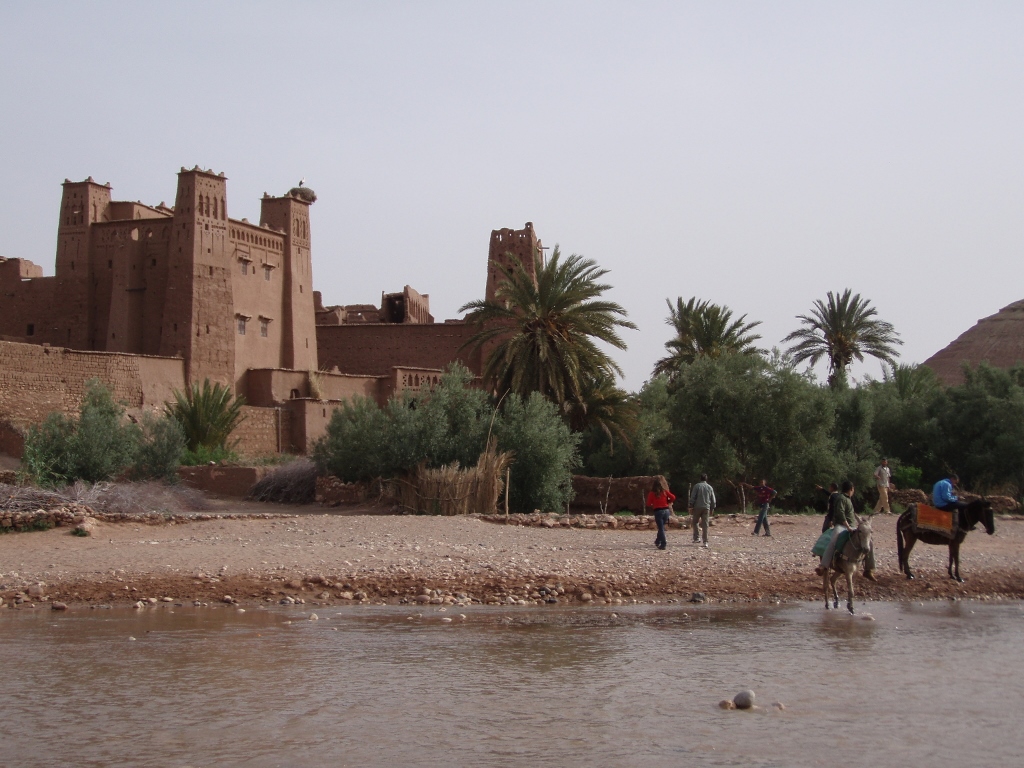 Ait-Ben-Haddou ksar
Ait-Ben-Haddou ksar
Soon, I got back into a “grand taxi” (a shared taxi that operates as part of the public transportation system), and that’s how I returned to Ouarzazate.
Since I had set out early in the morning to visit Ait-Ben-Haddou and was very efficient about it, I returned to my hotel relatively early as well. Breakfast was still being served, so I took advantage of that.
On the other hand, I had made plans to meet Majid, Karima’s cousin, who had helped me organise my Sahara trip back in Erfoud. This was an opportunity for us to meet in person, but it quickly became clear that he had a particular reason for wanting to see me. It turned out he thought I was somehow connected to the tourism industry and hoped he might benefit from that for his own business. Since that wasn’t the case, our meeting was brief. Neither of us felt the need to prolong it.
In the meantime, I had a nice cup of coffee and then I took a taxi to the coach station, as I was continuing my tour of Morocco by heading to Marrakesh that day.
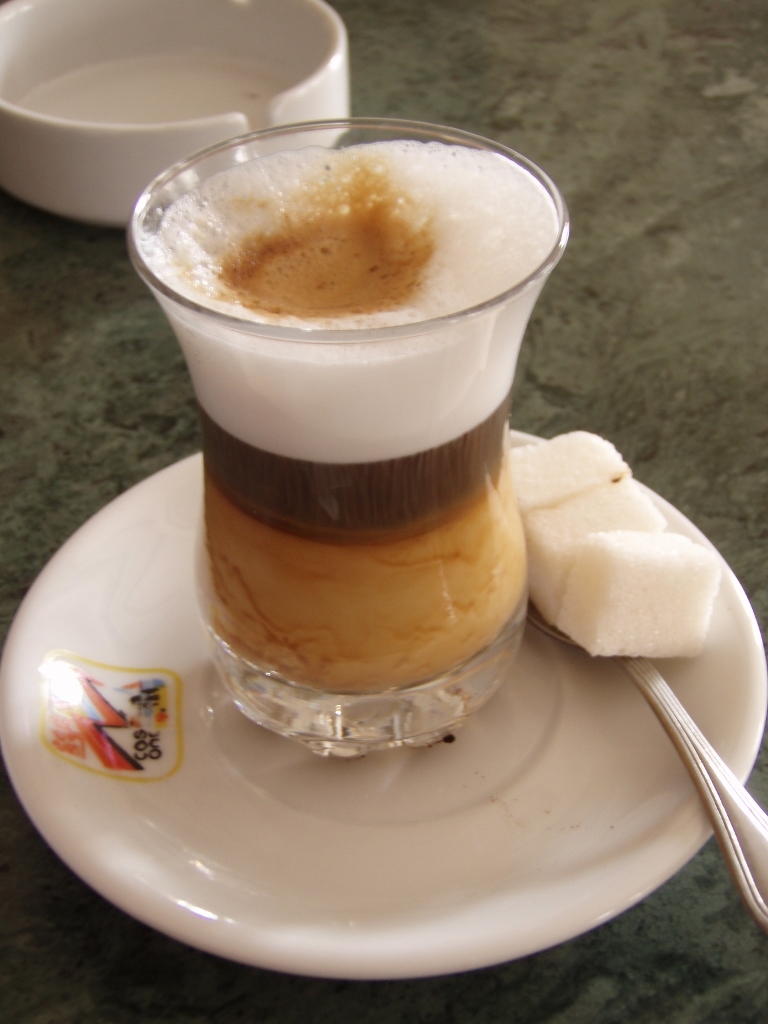 Coffee in Ouarzazate
Coffee in Ouarzazate
The journey from Ouarzazate to Marrakesh takes well over four hours, which might seem surprising given the distance of less than 200 km. But that was public transportation in Morocco in 2010.
Here is a map showing all the places I visited during this trip and it seems to me that most of it was spent, in fact, on coaches.
Still, at this stage, it didn’t really bother me anymore. On the one hand, I had already gotten used to Moroccan coaches and the uncertainty of how long any given trip would take. On the other hand, I realised that those long and time-unpredictable coach rides were probably exactly what I needed at that moment. Here’s why.
I came to understand that one of the things that stressed me out back home was constantly being interrupted in whatever I was doing – two hundred different responsibilities I was always trying to weave into some kind of coherent picture. When I was riding on those coaches, not only was I forced to practice patience, but, in a sense, I was doing only one thing: I was simply existing. I was exactly where I needed to be at that moment, physically confined to my seat, yes, but the point was that no one was interrupting me, no one was bothering me, and there was nothing else I needed or had to do. I was alone with myself and uninterrupted.
This line of thinking was probably also influenced by the book I was reading at the time – an inspiring work on psychology, spirituality and self-help, along with rather deep reflections and a series of incredible, unexpected insights. And so, I came to this strange conclusion: that those coach rides were exactly what I needed most at that particular time.
I can’t really claim that it was truly like that, since I don’t have a parallel version of myself to compare the outcome of long intercity coach rides with the result of a comfortable and efficient transfer by a good car (since teleportation is, unfortunately, not an option). And in the end, the old saying always applies – everyone comforts themselves the best way they know how.
Aside from thinking about my existence, my stress, and the upsides of long rides, I also used that time to observe the landscapes I was passing through and occasionally take some photos.
The road led through the High Atlas mountain range and from time to time snow-covered peaks could be seen, along with various other details. This part of my journey through Morocco turned out to be one of the most striking – an exceptional beauty of mountain scenery, with fertile river valleys full of vegetation, surrounded by rather barren, rugged slopes.
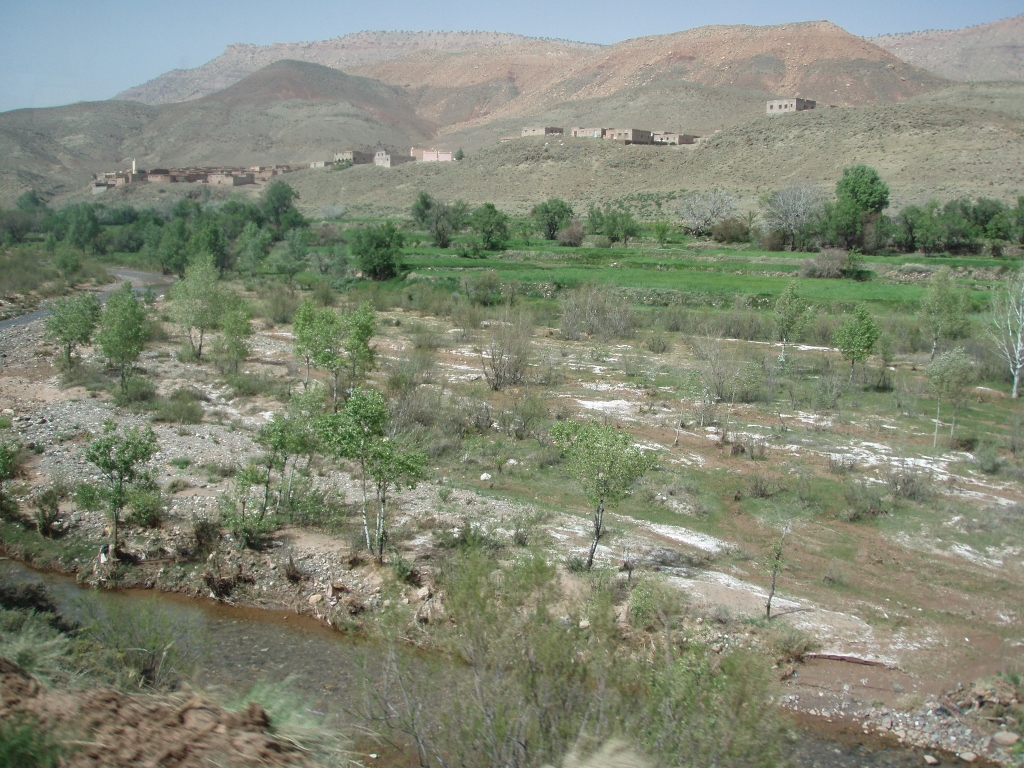 On the way from Ouarzazate to Marrakesh
On the way from Ouarzazate to Marrakesh
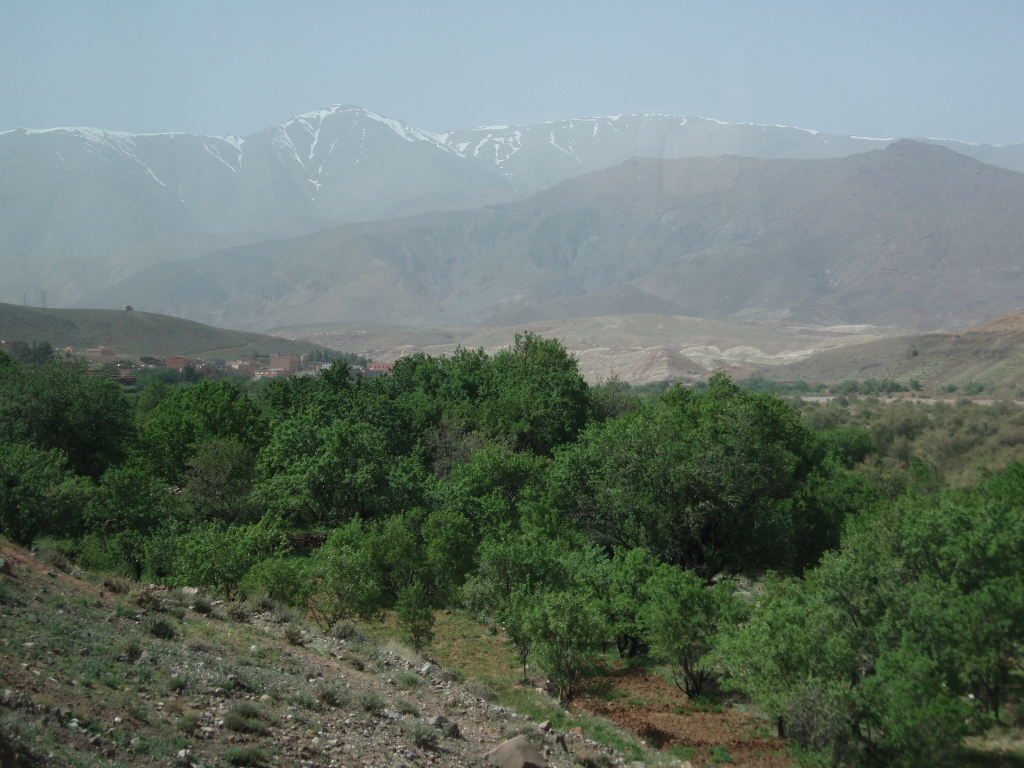 On the way from Ouarzazate to Marrakesh
On the way from Ouarzazate to Marrakesh
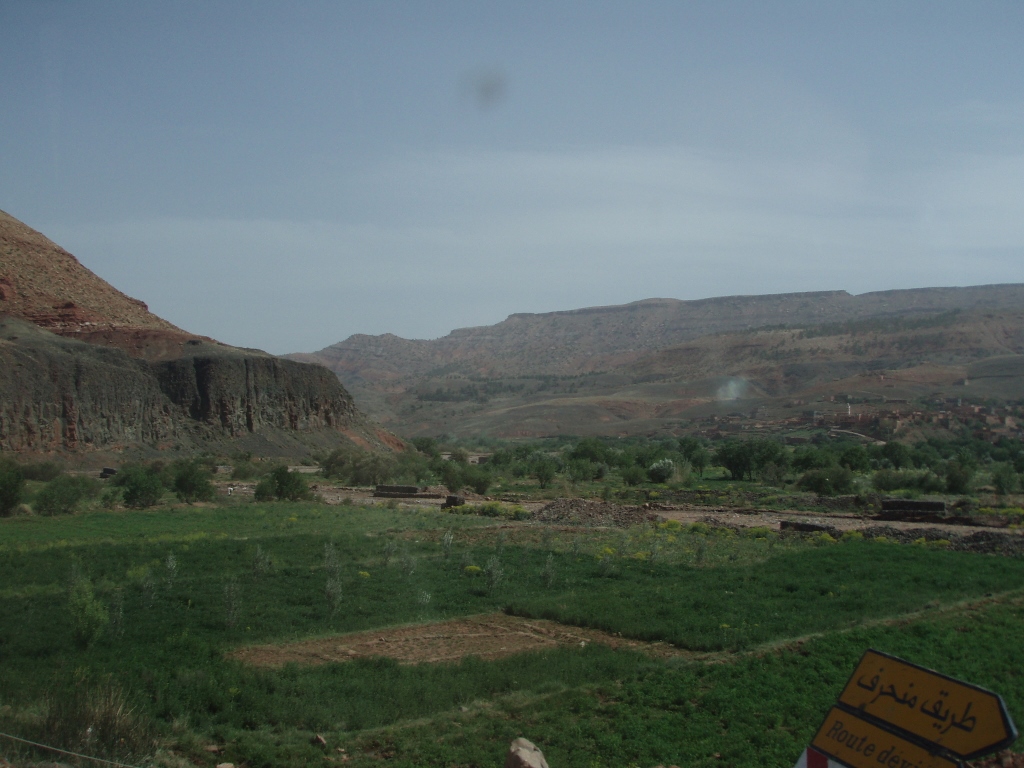 On the way from Ouarzazate to Marrakesh
On the way from Ouarzazate to Marrakesh
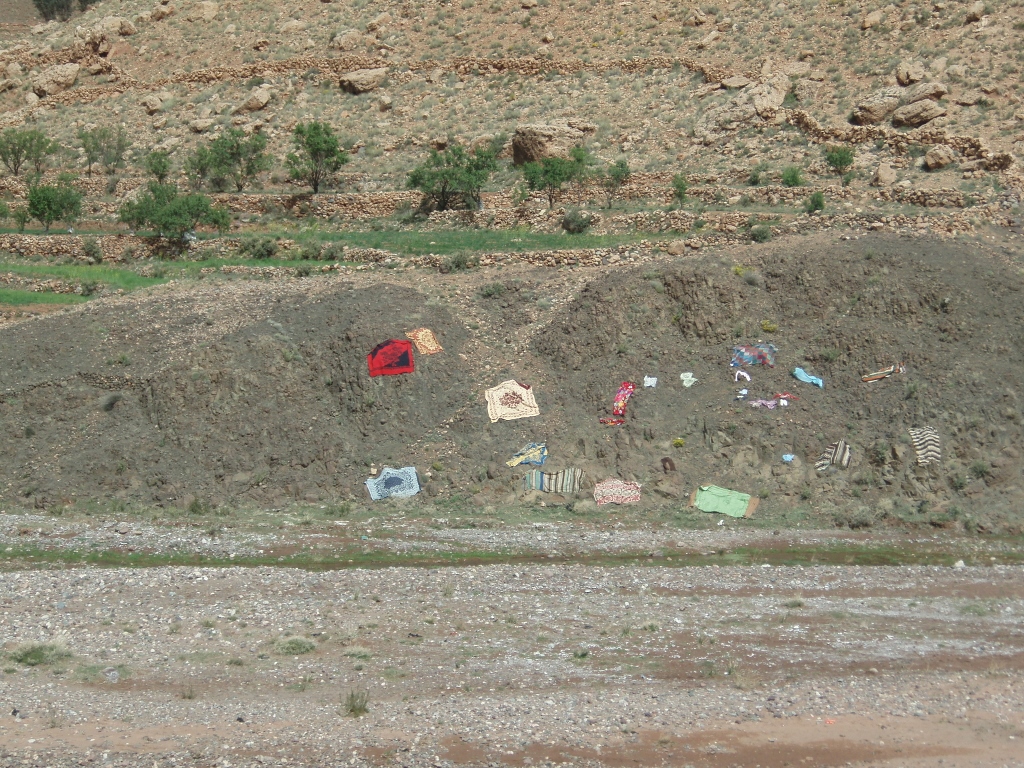 On the way from Ouarzazate to Marrakesh
On the way from Ouarzazate to Marrakesh
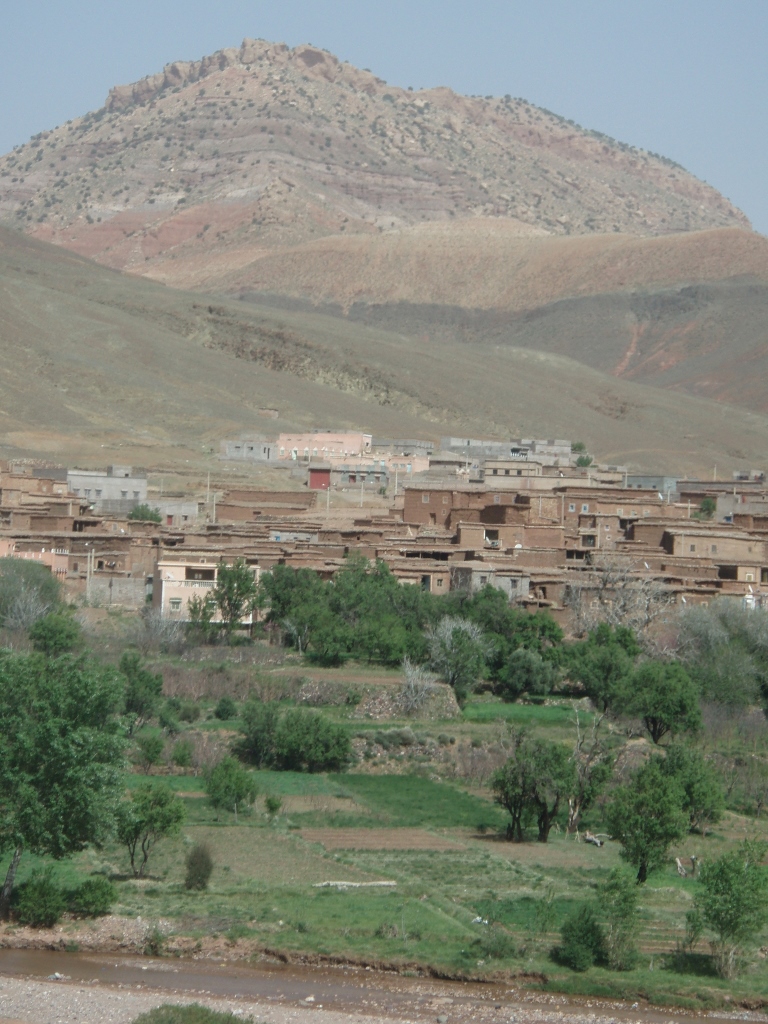 On the way from Ouarzazate to Marrakesh
On the way from Ouarzazate to Marrakesh
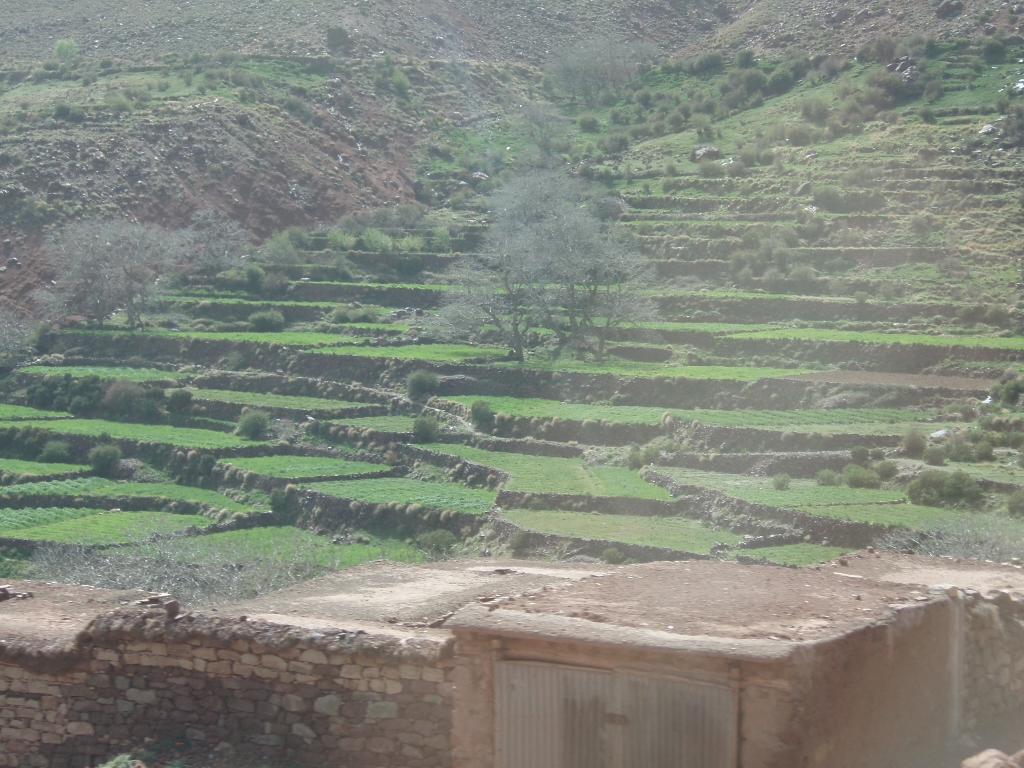 On the way from Ouarzazate to Marrakesh
On the way from Ouarzazate to Marrakesh
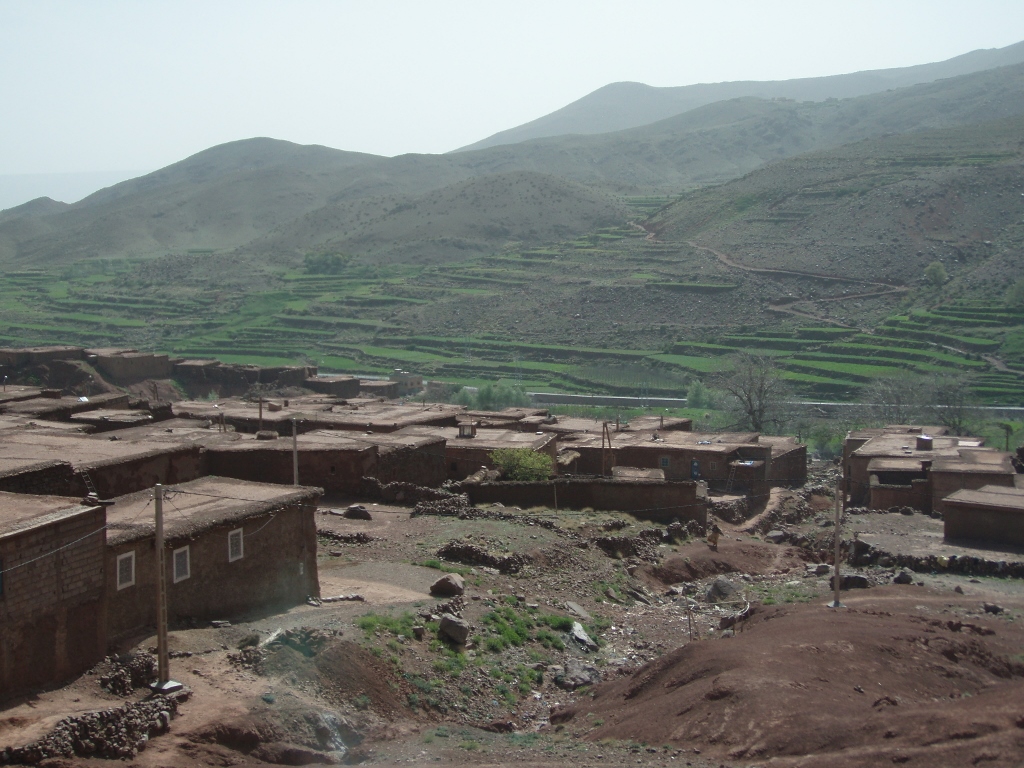 On the way from Ouarzazate to Marrakesh
On the way from Ouarzazate to Marrakesh
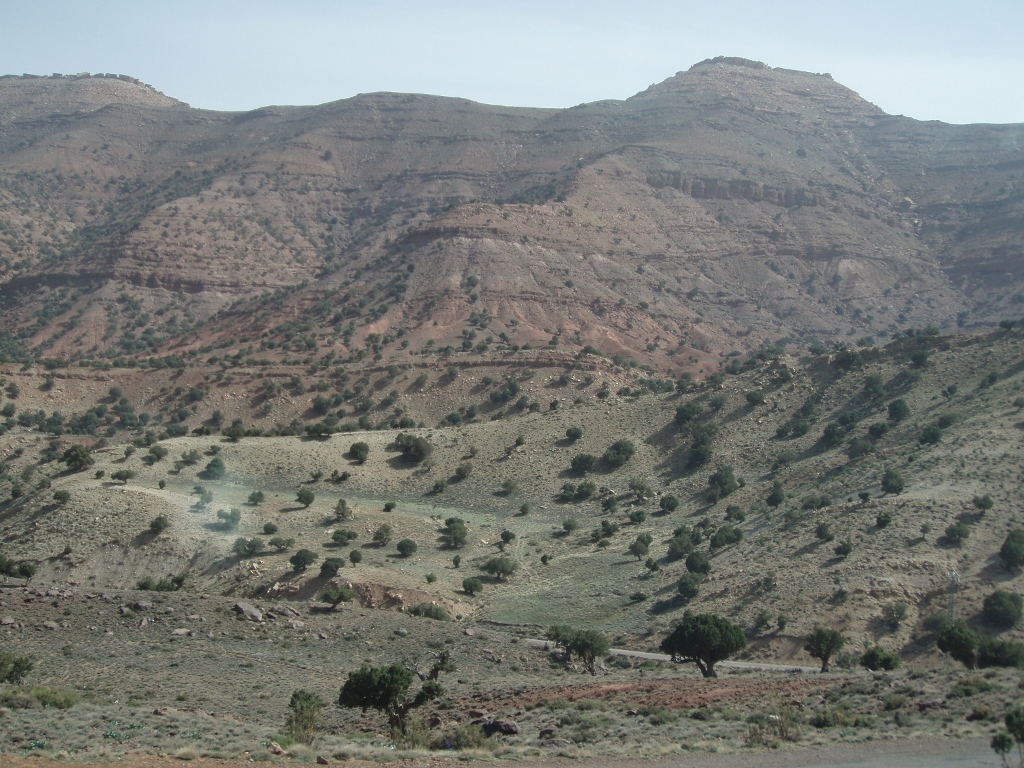 On the way from Ouarzazate to Marrakesh
On the way from Ouarzazate to Marrakesh
In one area, numerous conifer saplings could be seen and I found it especially impressive how people here were trying to green parts of the mountain range.
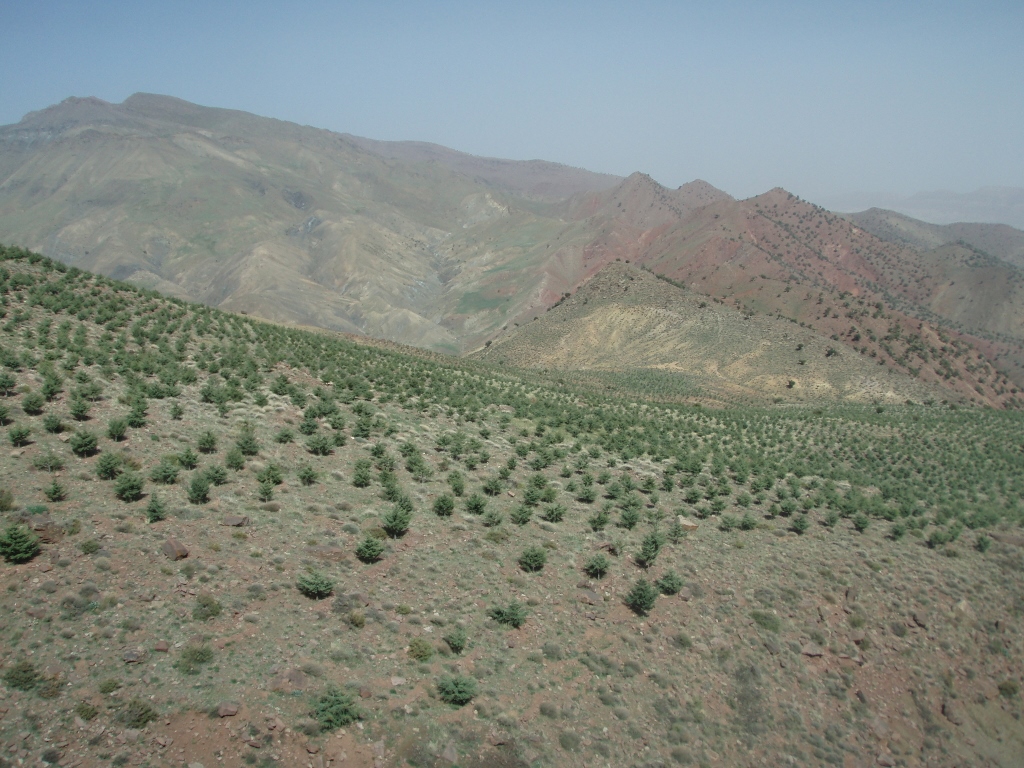 On the way from Ouarzazate to Marrakesh
On the way from Ouarzazate to Marrakesh
We also crossed over a mountain pass at an altitude of 2,260 meters, but I didn’t capture that part. That wasn’t a problem at all, because I was so amazed by all the landscapes we were passing through that I took photos of other places instead.
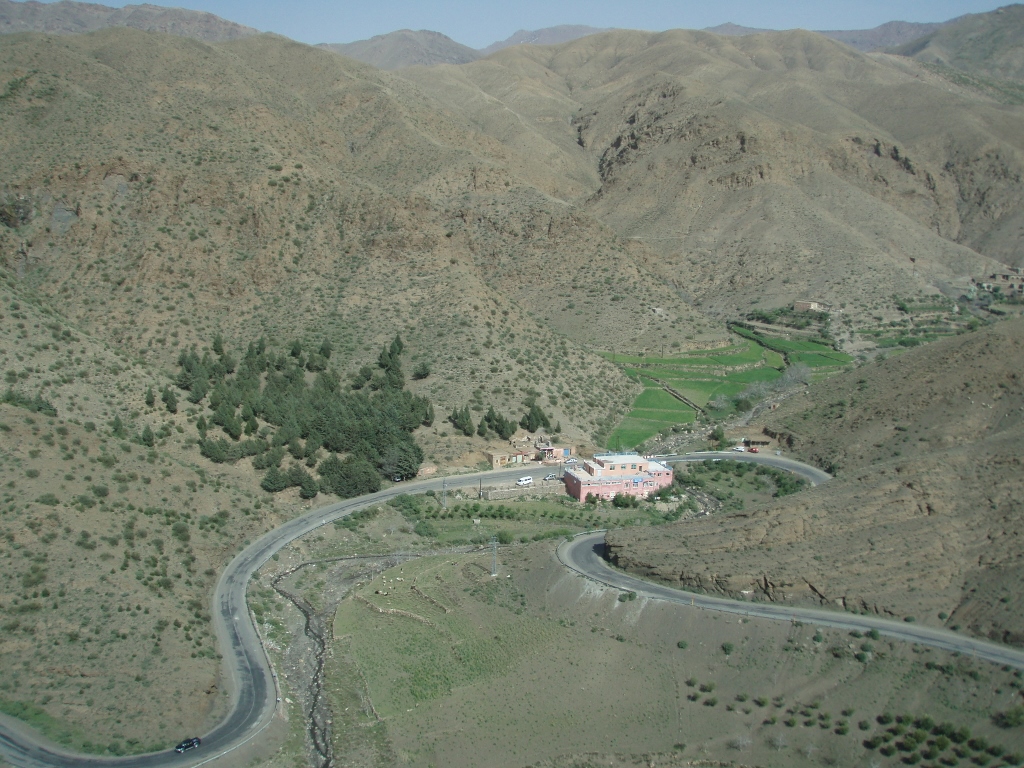 On the way from Ouarzazate to Marrakesh
On the way from Ouarzazate to Marrakesh
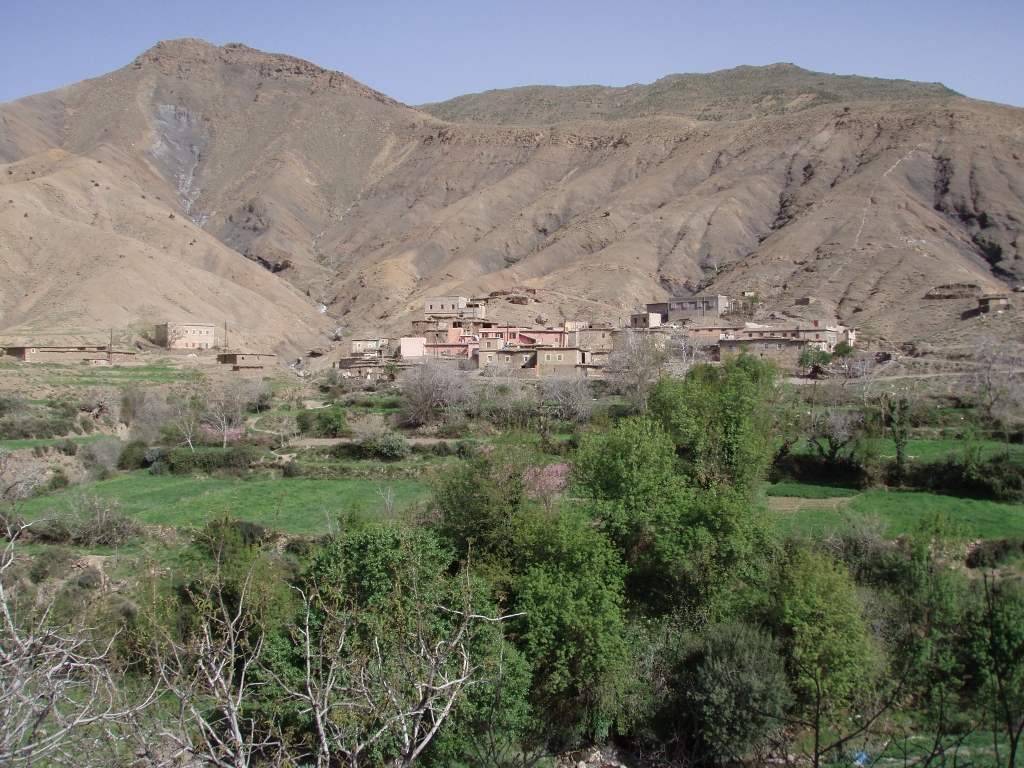 On the way from Ouarzazate to Marrakesh
On the way from Ouarzazate to Marrakesh
At one stop where we took a break, I photographed a road sign indicating the presence of snowbreaks, which means that when conditions are right, there is snow even in the lower areas, not just on the high mountain peaks.
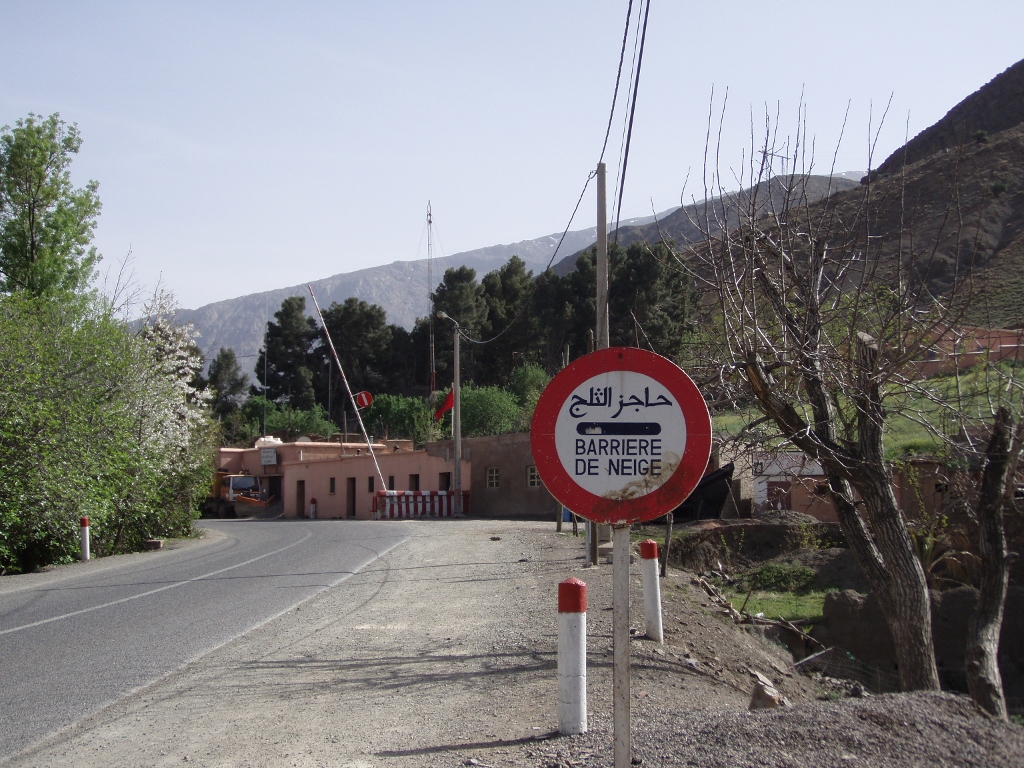 On the way from Ouarzazate to Marrakesh
On the way from Ouarzazate to Marrakesh
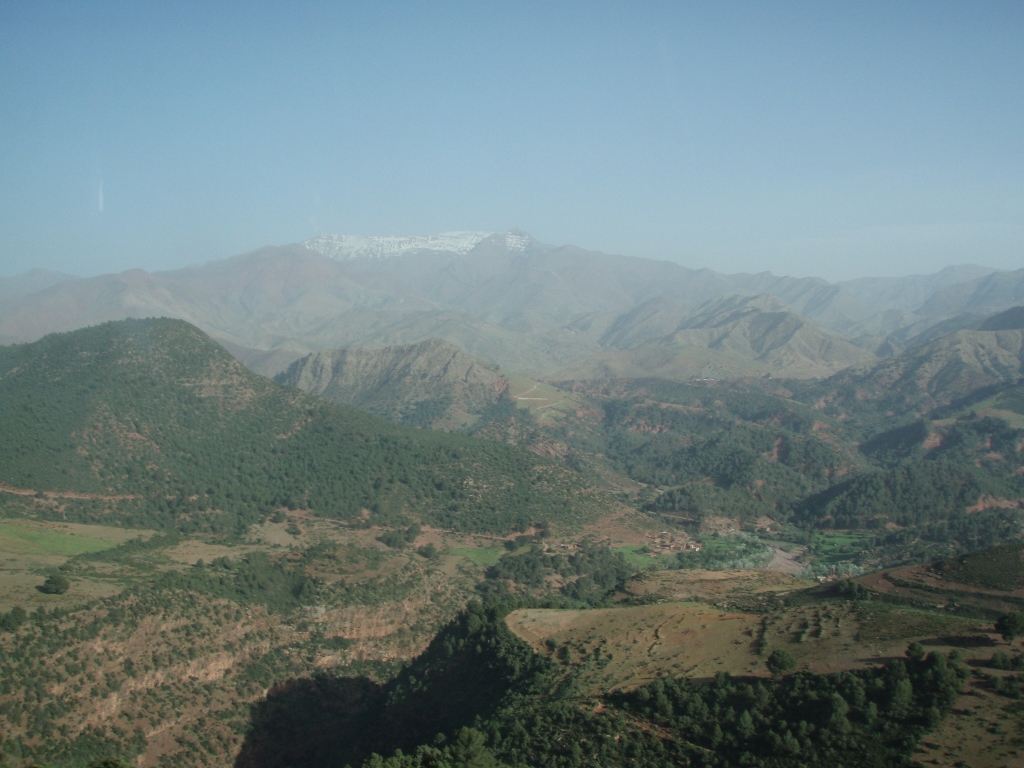 On the way from Ouarzazate to Marrakesh
On the way from Ouarzazate to Marrakesh
I also had another interesting experience on the coach. Towards the end of the trip, they started playing music videos on the TV monitors. One of the videos was “artistic,” with some sort of storyline – a young woman was pouting and swinging next to a tree in the countryside, picking off little branches and leaves, while behind her there was a tractor tire and the rear end of a cow (the woman was the lead female vocalist, not the cow, in addition to which the former one was munching on the leaves). The backing female singer was combing wool, while the lead male singer started off by pouring tea in a scene of family bliss (the woman was seated to his right, the backing female singer, presumably a sister-in-law, to his left), and then, for some unknown reason, the guy spent the rest of the video hitchhiking. Interestingly, every single car was going in the opposite direction and in the end he gave up and slowly walked forwards on foot. So, aside from the fact that the music was monstrously dull and repetitive, the video was – something else!
And I was also extremely bored, the journey was dragging on for too long, and because of the music I couldn’t focus on my “inner experience,” so I gave in to some outward sarcasm.
Luckily, at some point, we finally arrived in Marrakesh and I took a taxi to the hotel I had chosen.